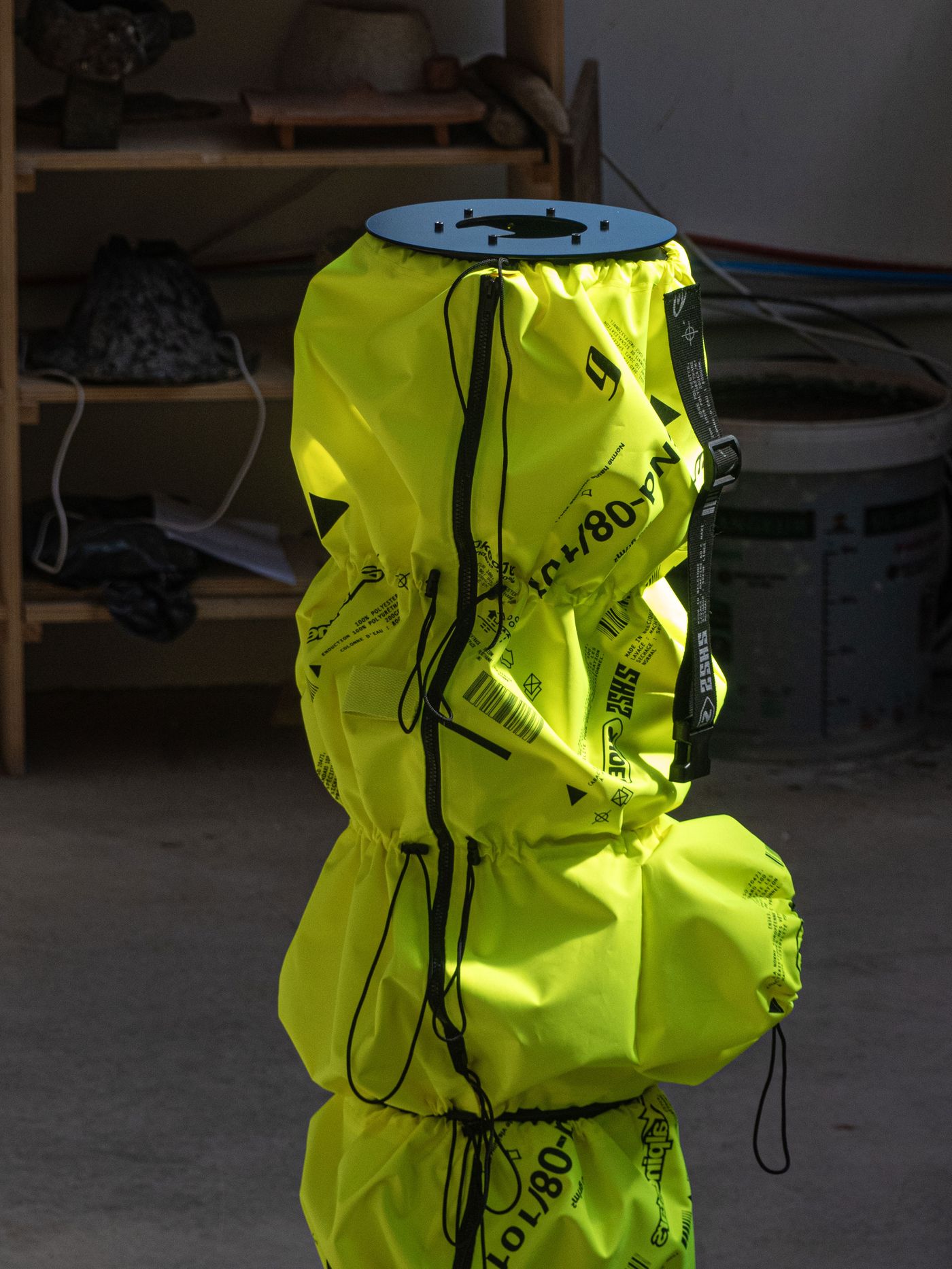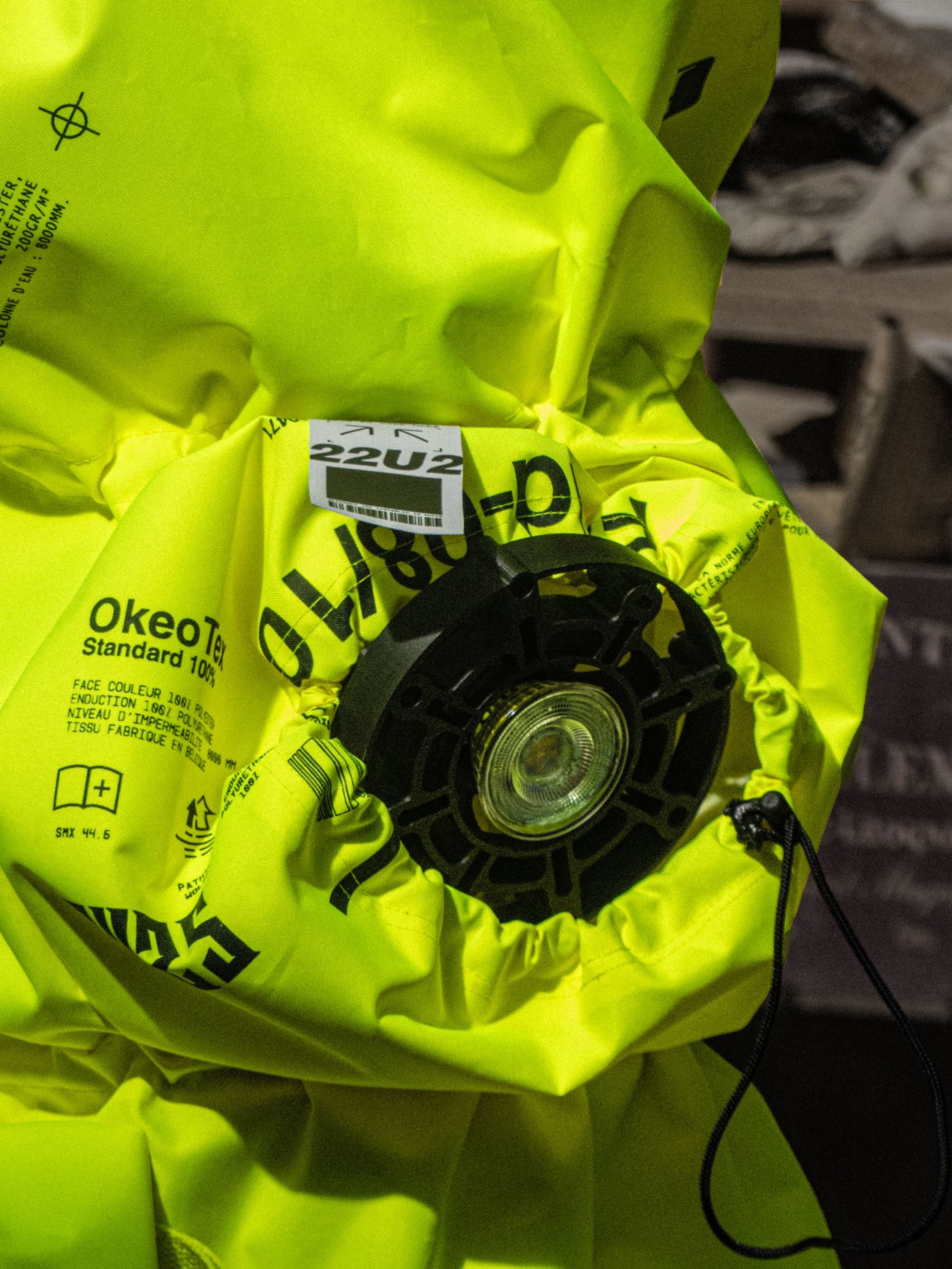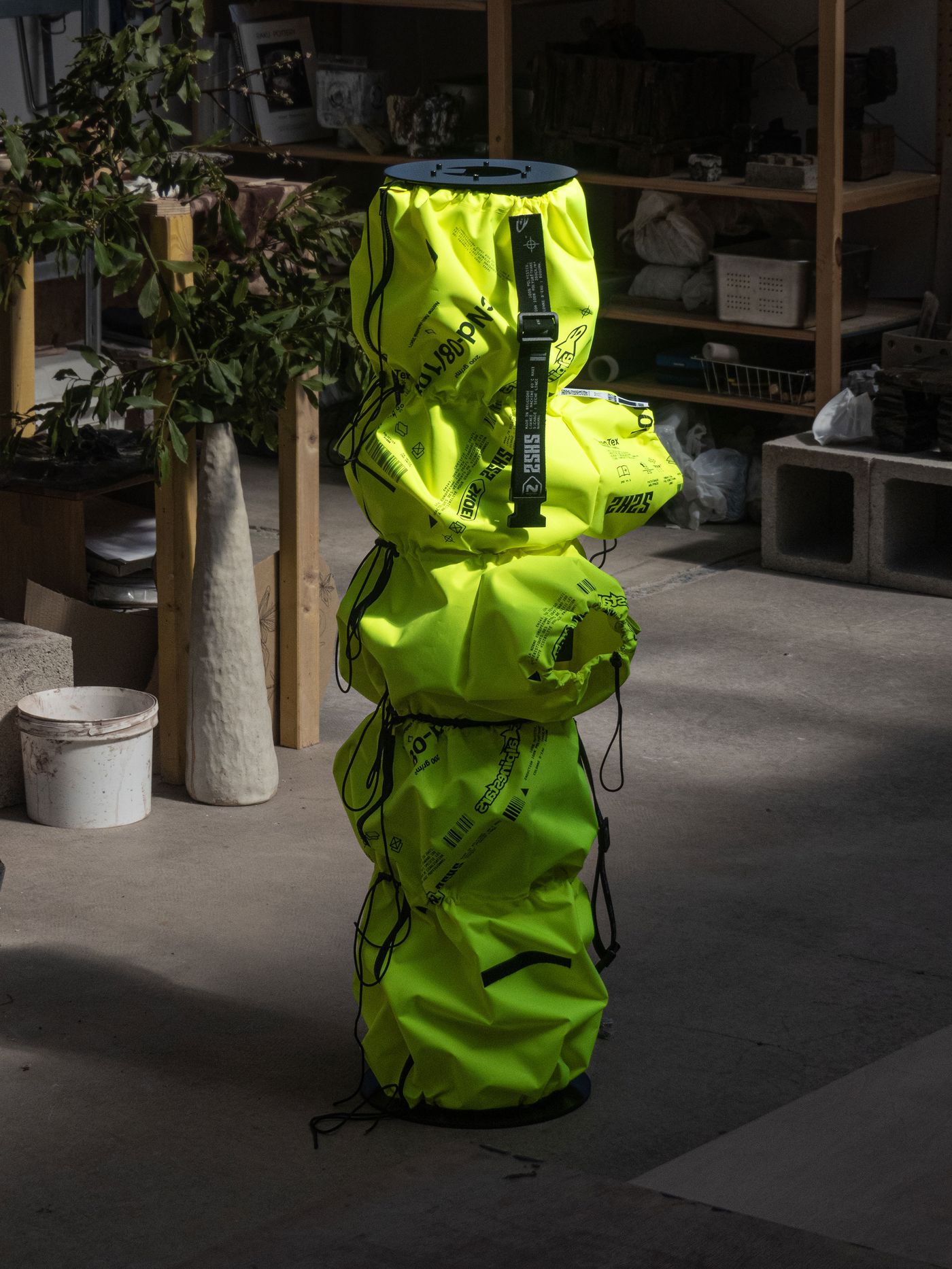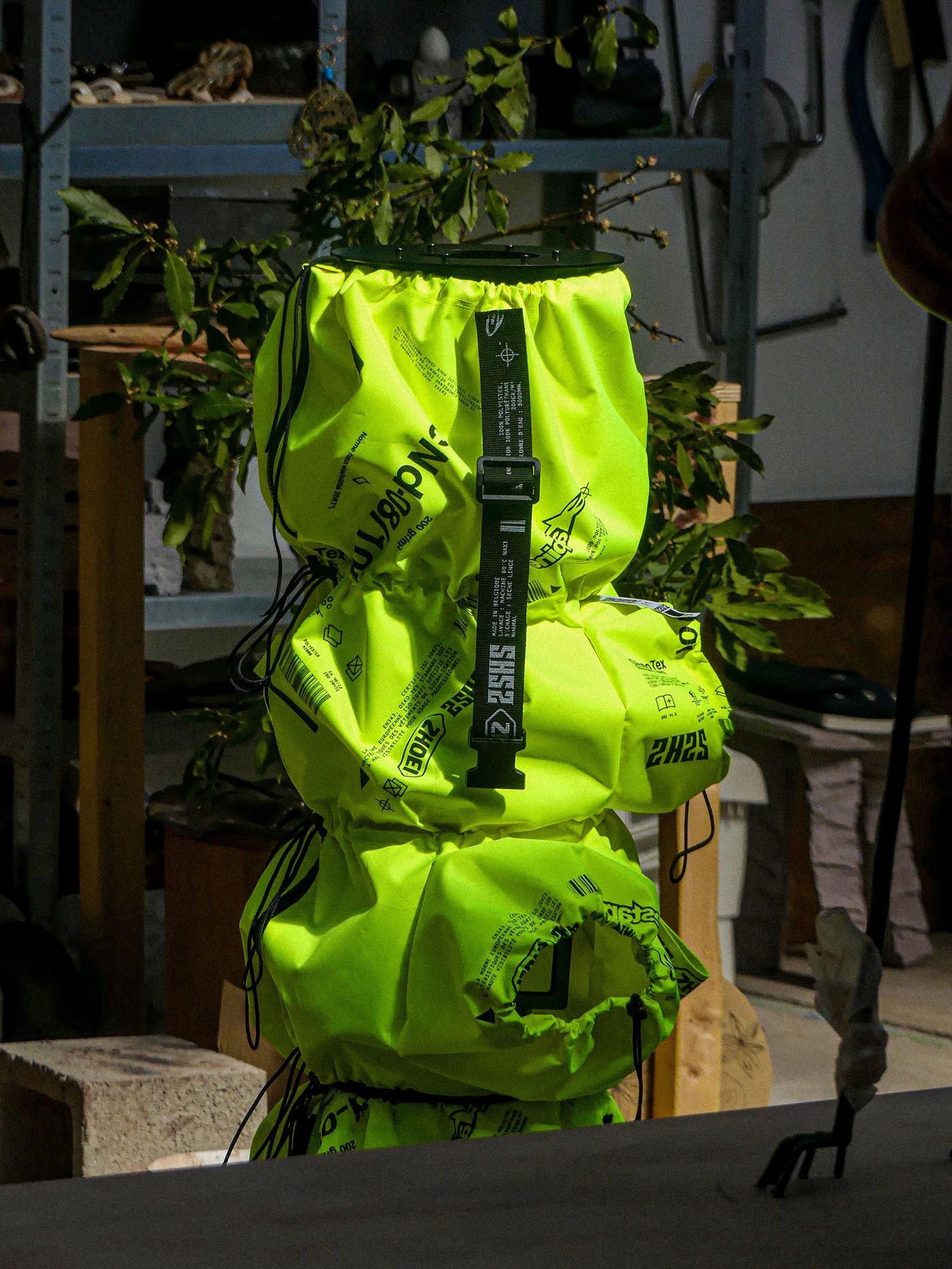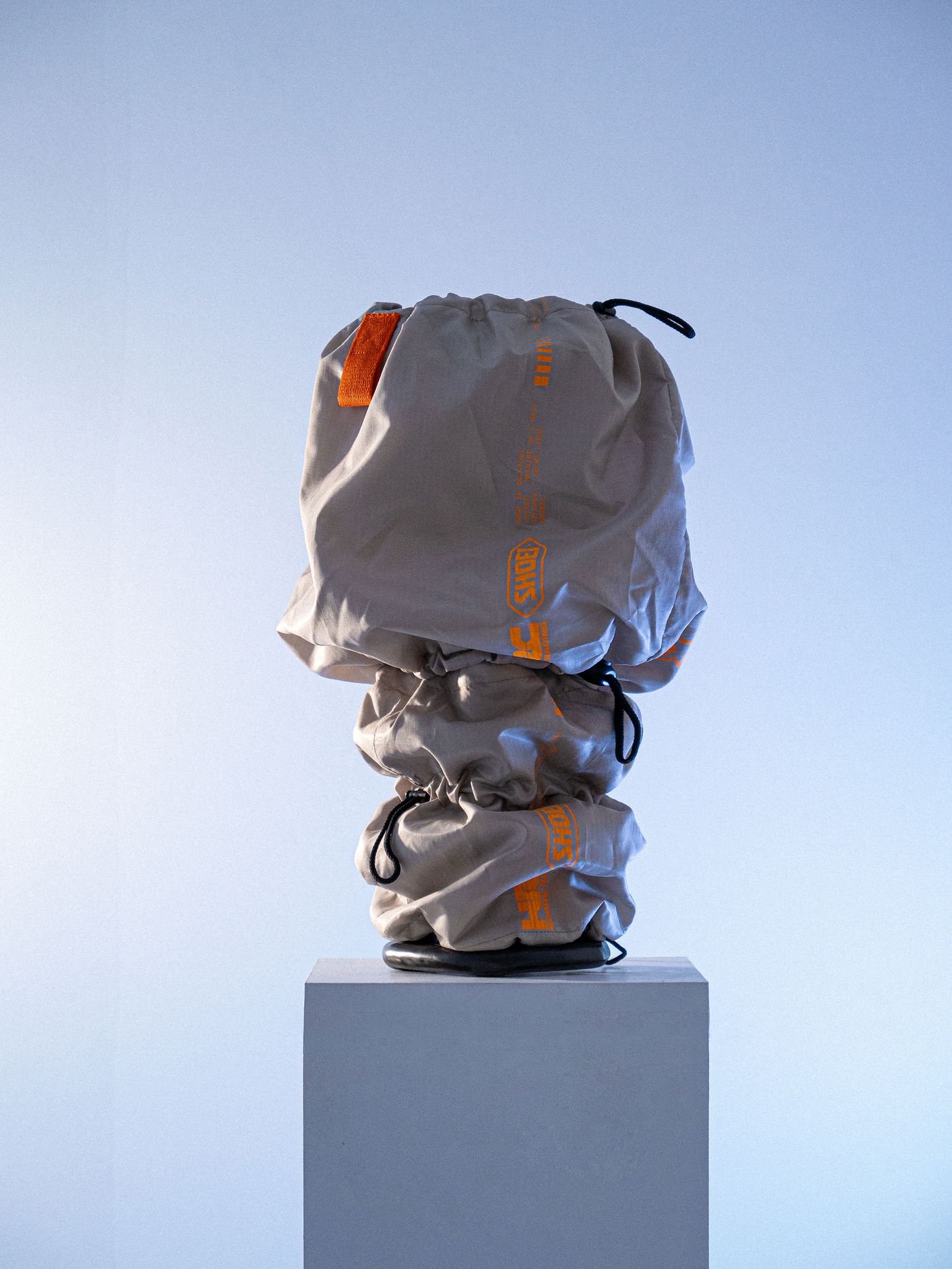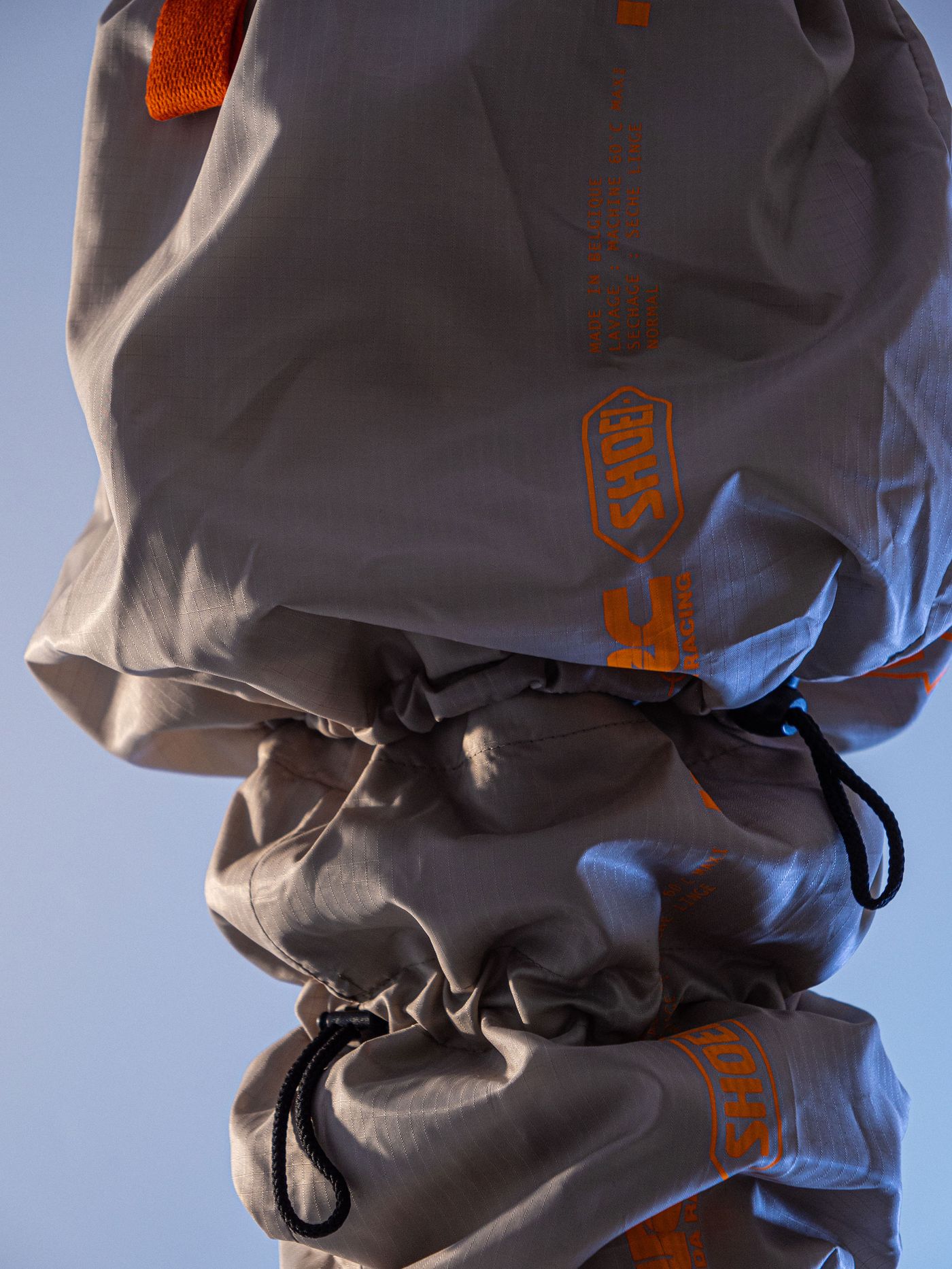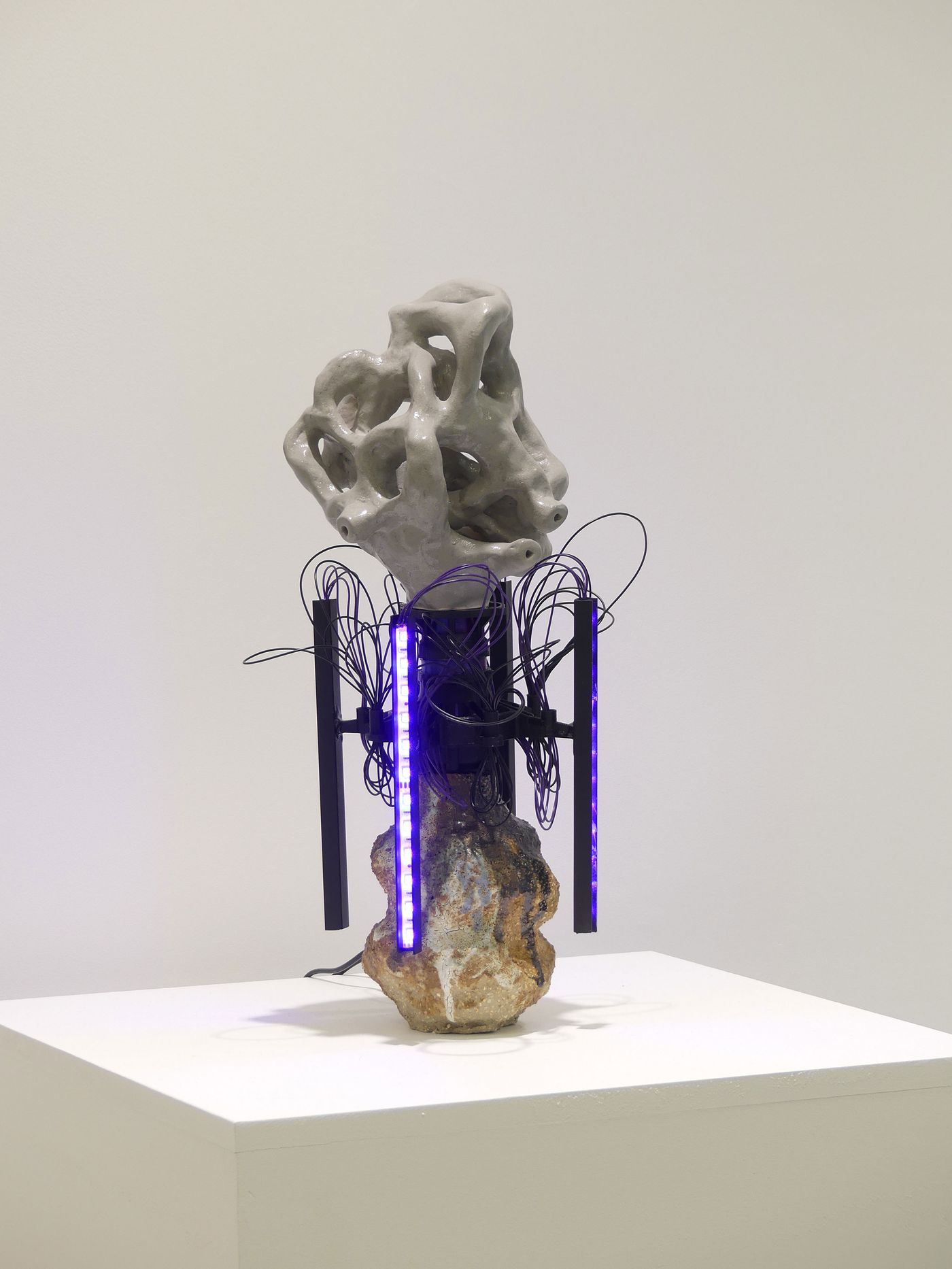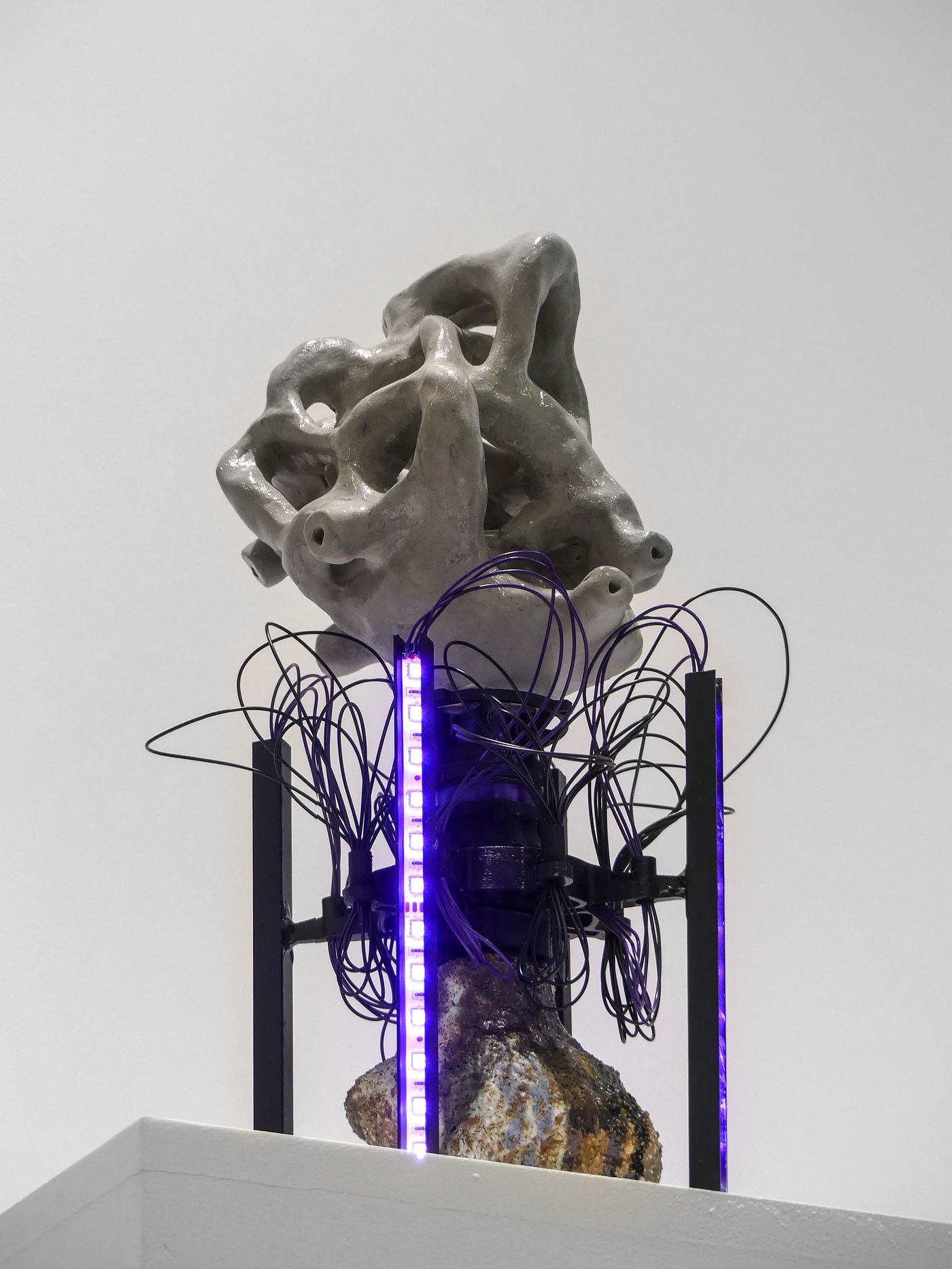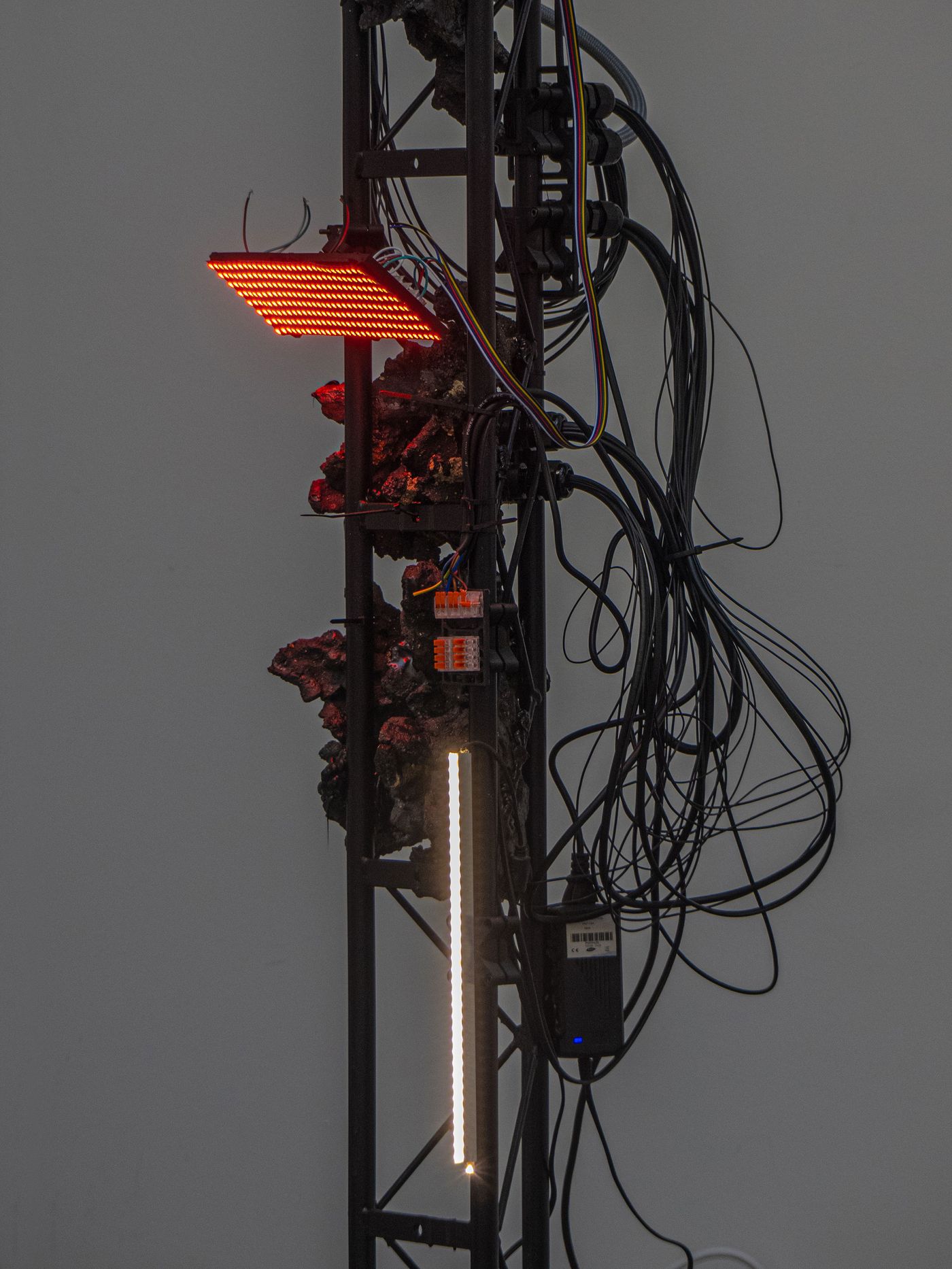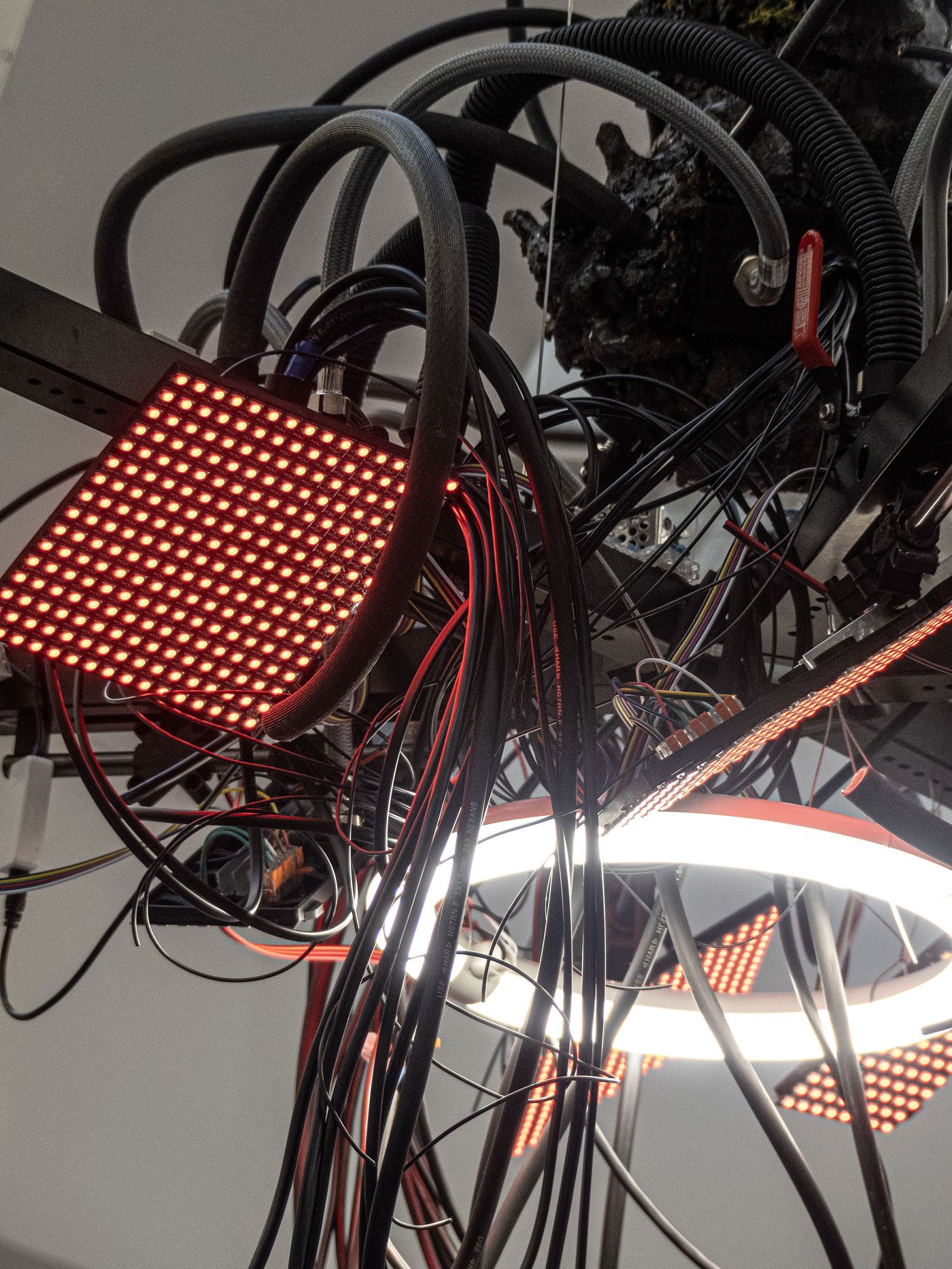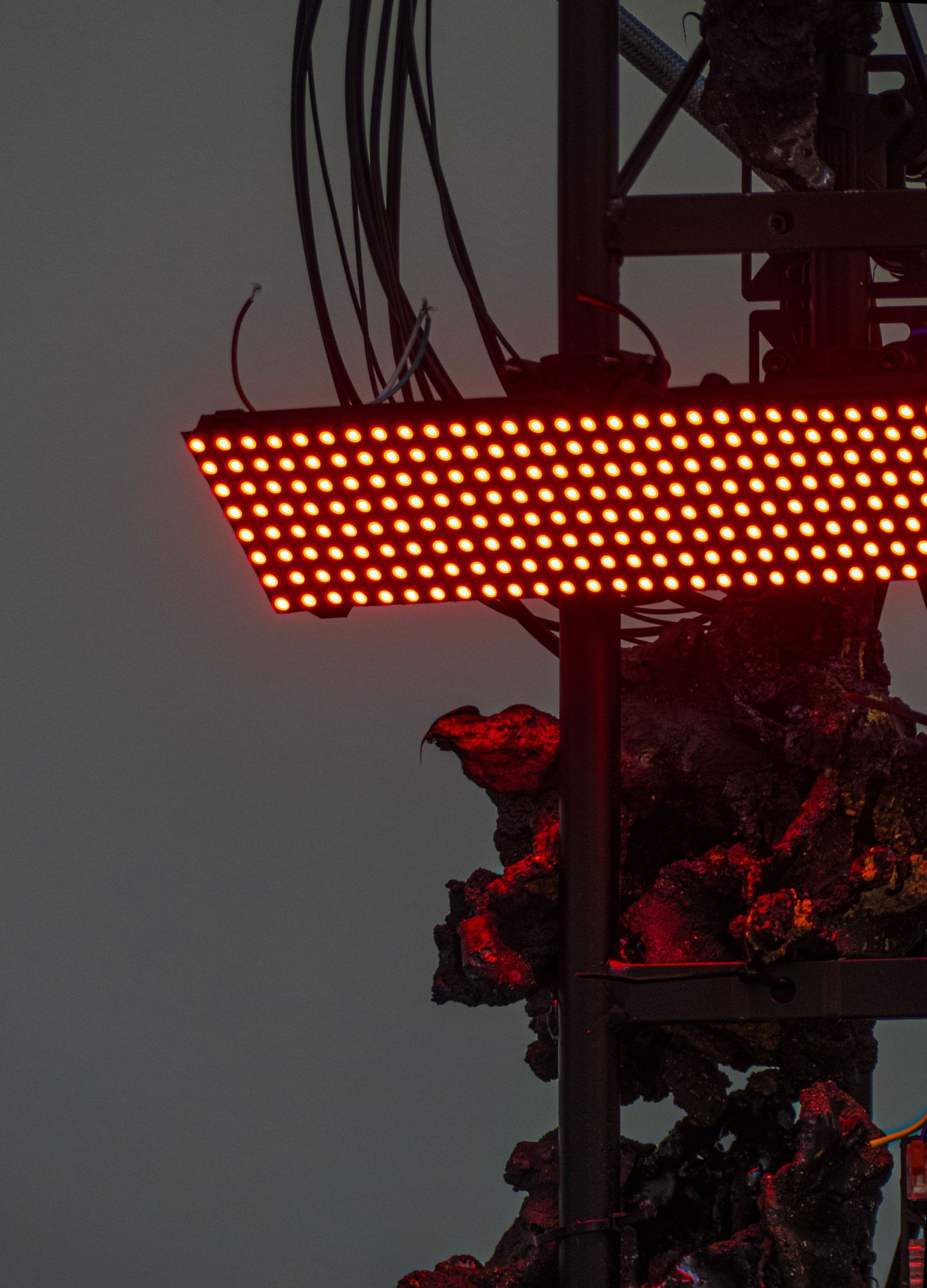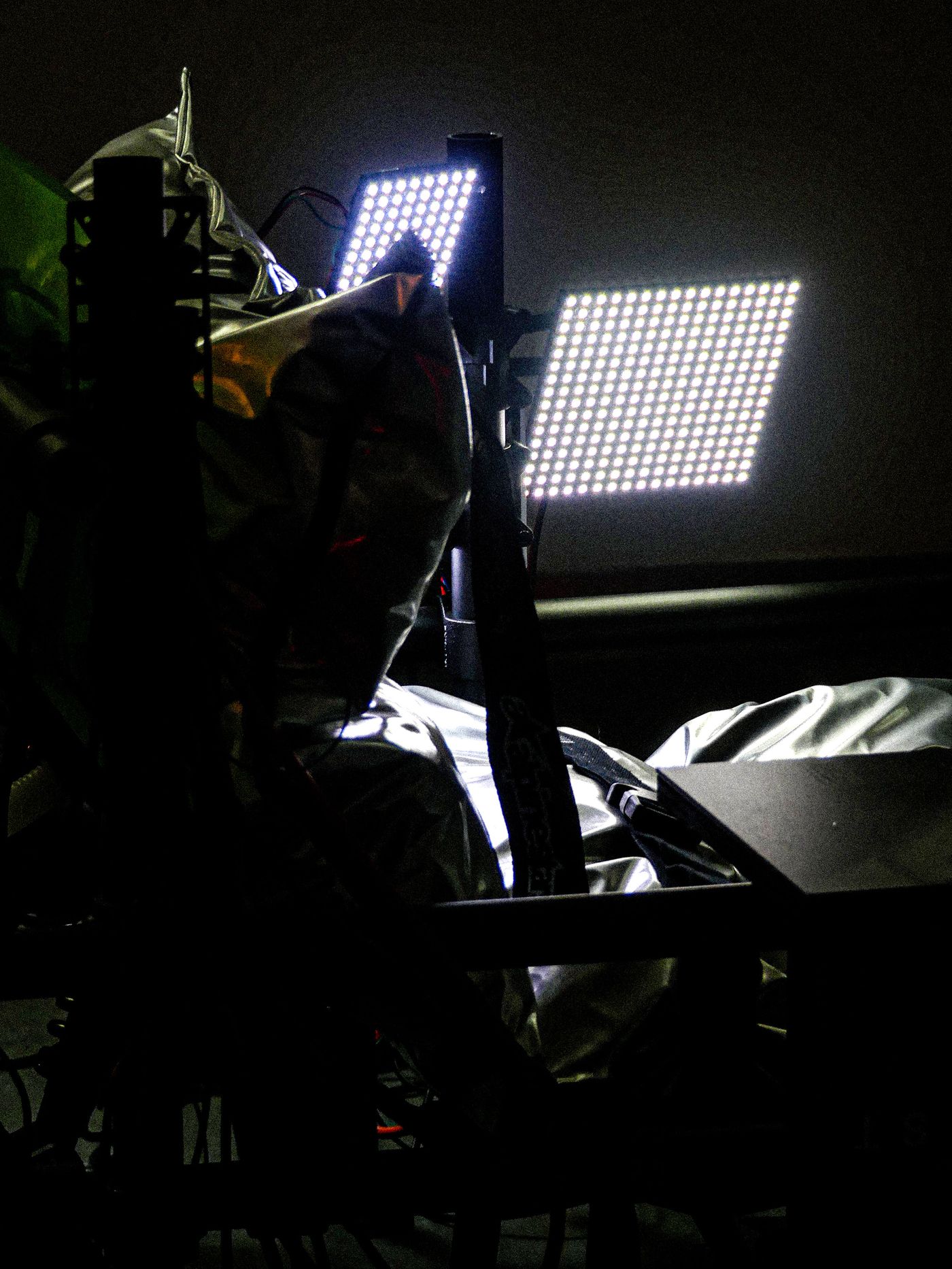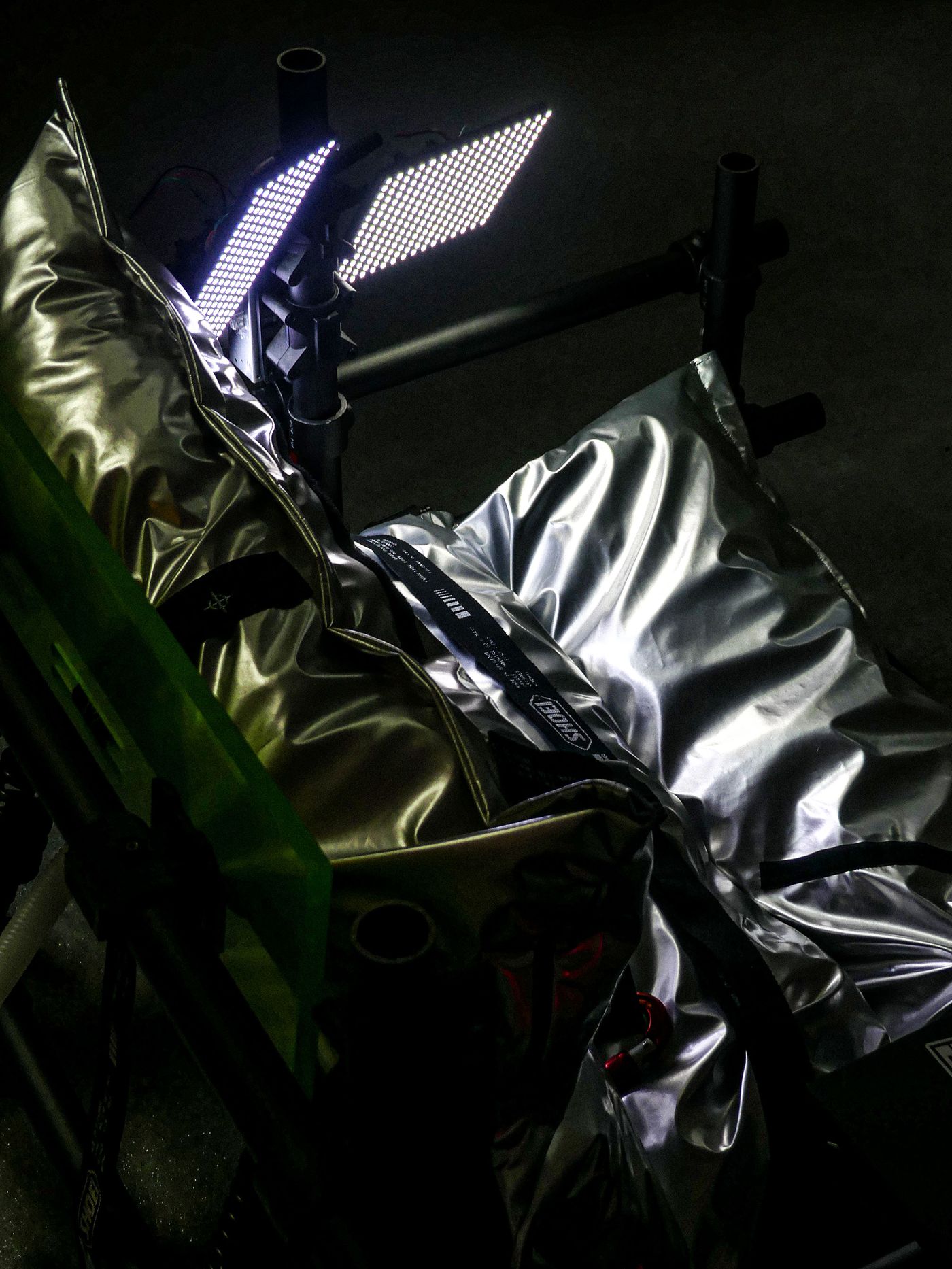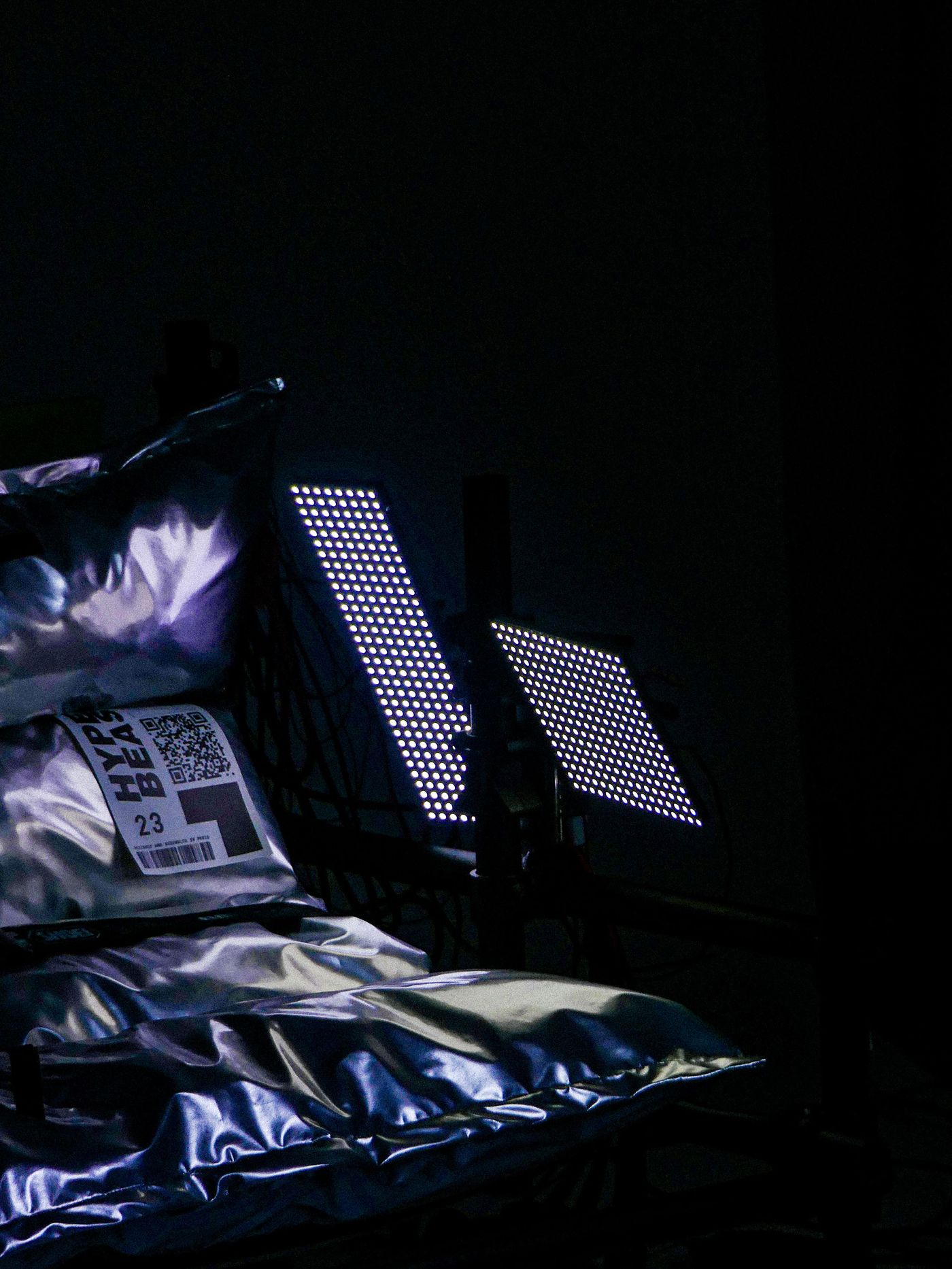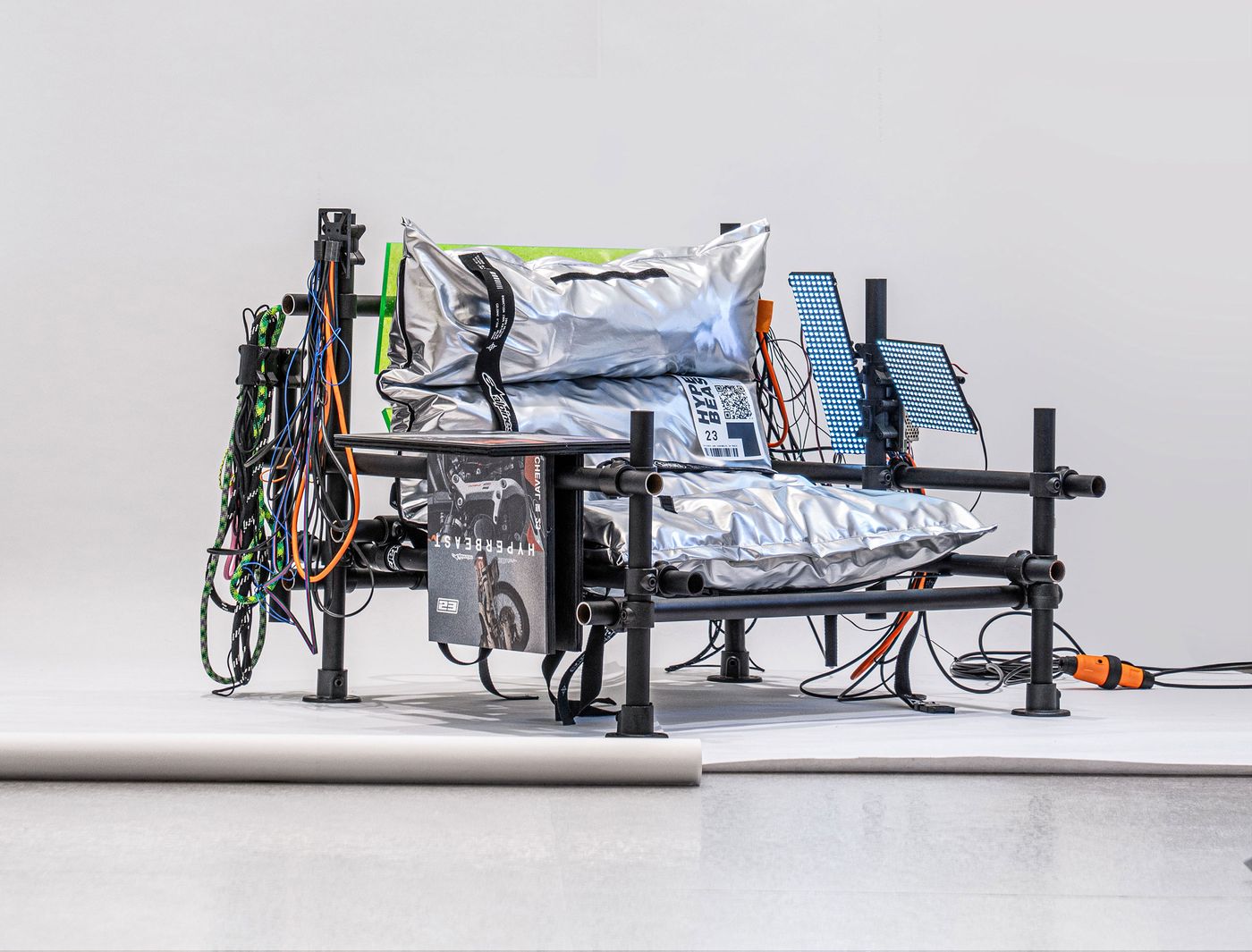
Between Dystopia and Delight: The Techno Exuberance of Jean-Baptiste Durand
Words by Eric David
Location
Between Dystopia and Delight: The Techno Exuberance of Jean-Baptiste Durand
Words by Eric David
In an era where minimalism often feels more or less like a design default, French designer Jean-Baptiste Durand’s techno exuberance is a welcome interruption. Equal parts speculative fiction and streetwise bricolage, his convention-defying creations are unruly mash-ups of chaotic complexity, absurdly packed with low- and high-tech components, from ripstop textiles and cables to LED panels and 3D-printed joints in what is a striking departure from the sleek refinement and exquisite craftsmanship of so much contemporary design.
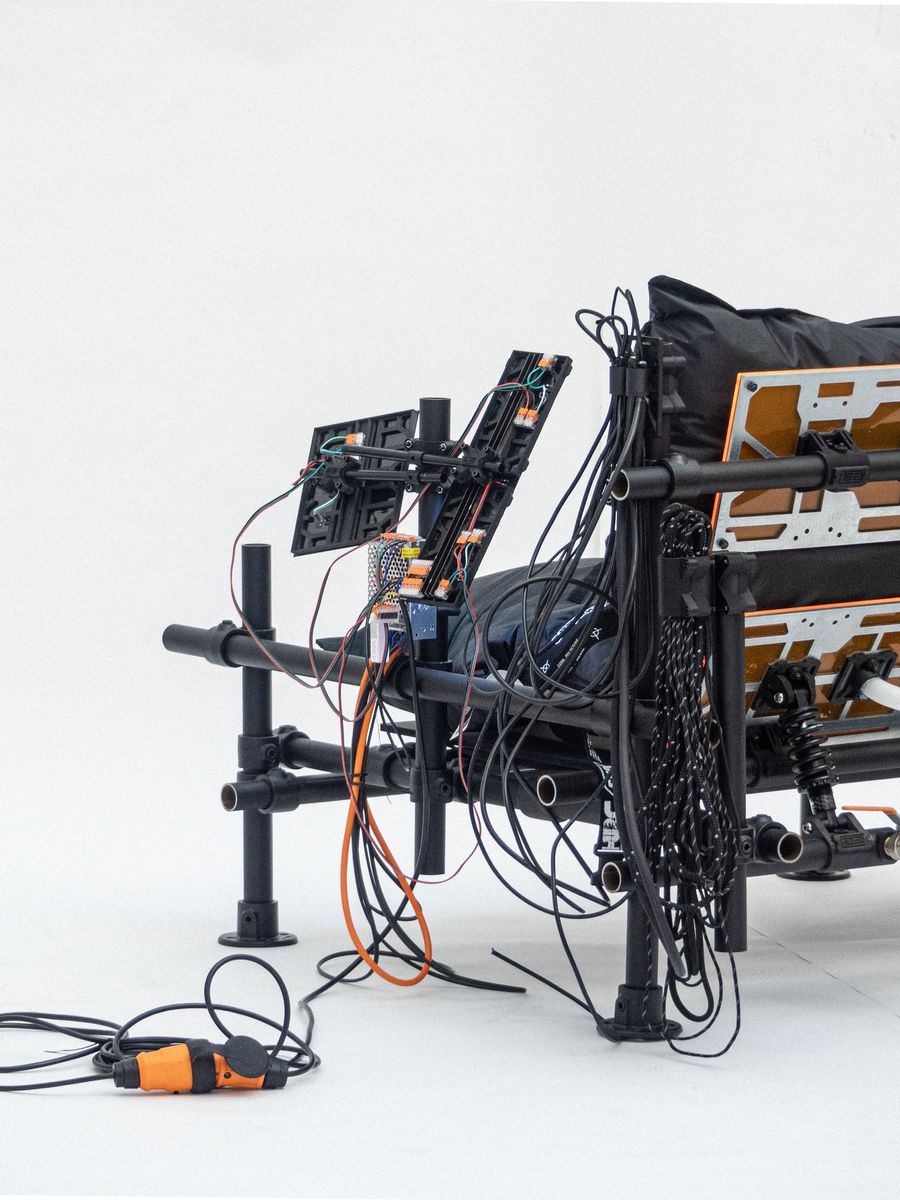
Hyperbeast Black Armchair (2024). Edition of 8 + 4 EA. Each piece is unique. Materials: Steel, PMMA, PLA (3D Printed), LED, fabric, electrical components. 110x100x75cm. Photo by Grégory Copitet.
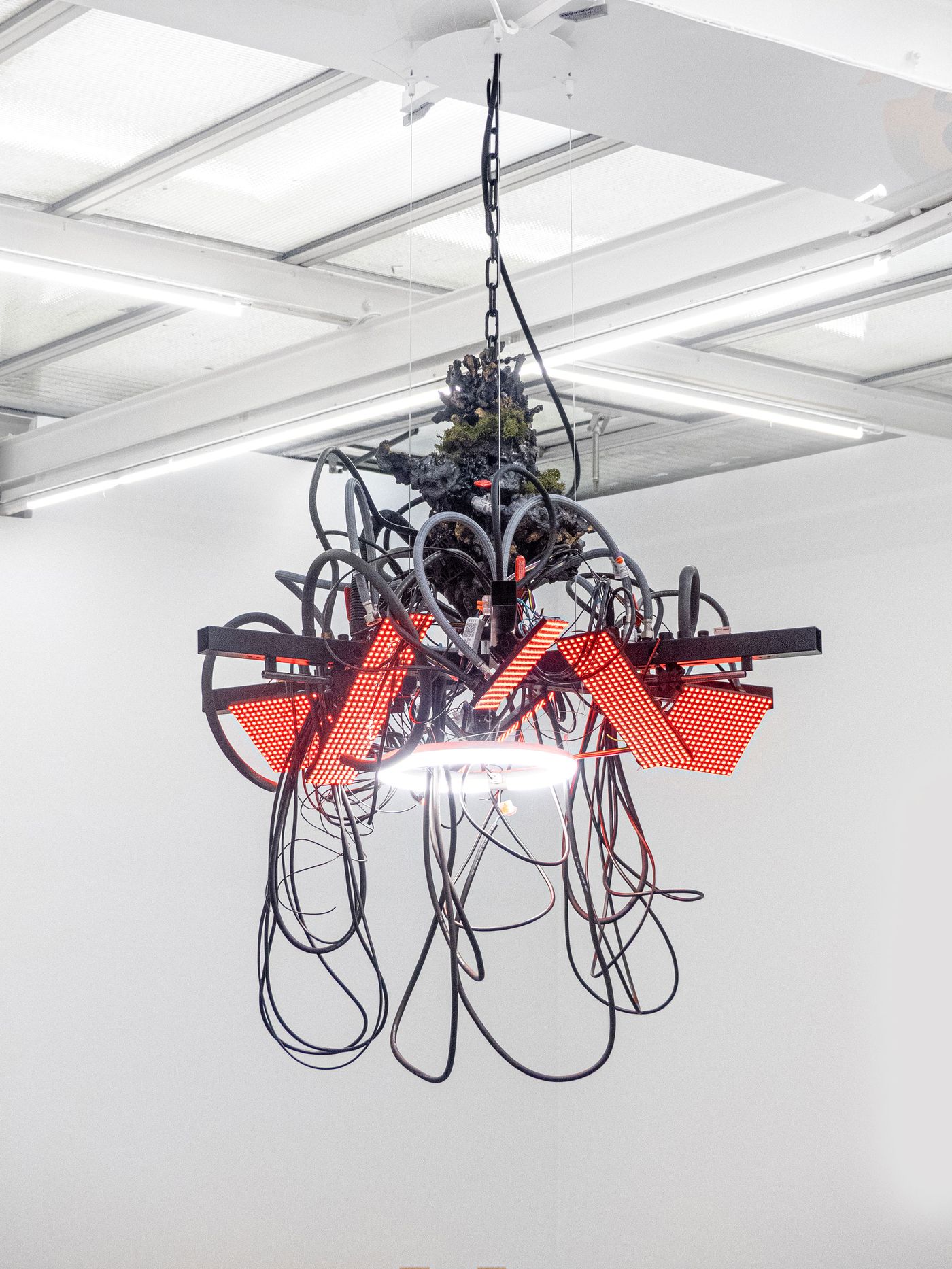
Voices in my Head (Hung) (2025). Edition of 8 + 4 EA. Each piece is unique. Materials: Steel, stoneware, PLA-based foam, PLA (3d printed), LEDs, pipes, electrical components. Variable dimensions. Exhibition view, "Et pourquoi pas …", at Galerie Philippe Valentin, Paris, 2025. Photo by Grégory Copitet.
Moving fluidly across interior architecture, scenography, furniture, and objects, Durand’s design language resists easy definition, blending traditional crafts with high-tech processes in an ever-evolving remix. This cross-disciplinary fluency was forged early on—first during five formative years at Mathieu Lehanneur’s studio, where he navigated projects ranging from industrial design to immersive environments, and later through a radical shift to ceramics while co-running Atelier Super in Le Havre with Virginie Willerval.
Durand’s latest works, which we spotted at Alcova’s installation during Milan Design Week in April, reflect this layered approach. The Canidogz lamp series, sewn in part by his mother using performance fabrics strapped over machined steel, is at once domestic and dystopian, tender and tactical. The Hyperbeast armchair—a luminous, cable-strung throne of metal and plywood—nods to gamer aesthetics while reading like the salvage of a sci-fi archaeologist. Ceramic pieces like DR-008 meanwhile hint at a fossil-free future, where humanity survives through ingenuity and repurposing, crafting meaning from technological ruin.
A compelling visual metaphor for our overstimulated, overloaded lives and the spectre of an AI-shadowed future, Durand’s work doesn’t seek to soothe our techno-anxieties—it confronts them head-on. Yet, paradoxically, it offers relief. Through unfiltered creative freedom, flashes of humour, and a palpable emotional charge, his designs recalibrate what design can mean in the age of algorithms. Yatzer recently caught up with the designer to talk about his practice, his fascination with dystopia, and collaborating with his mother.
Answers have been condensed and edited for clarity.
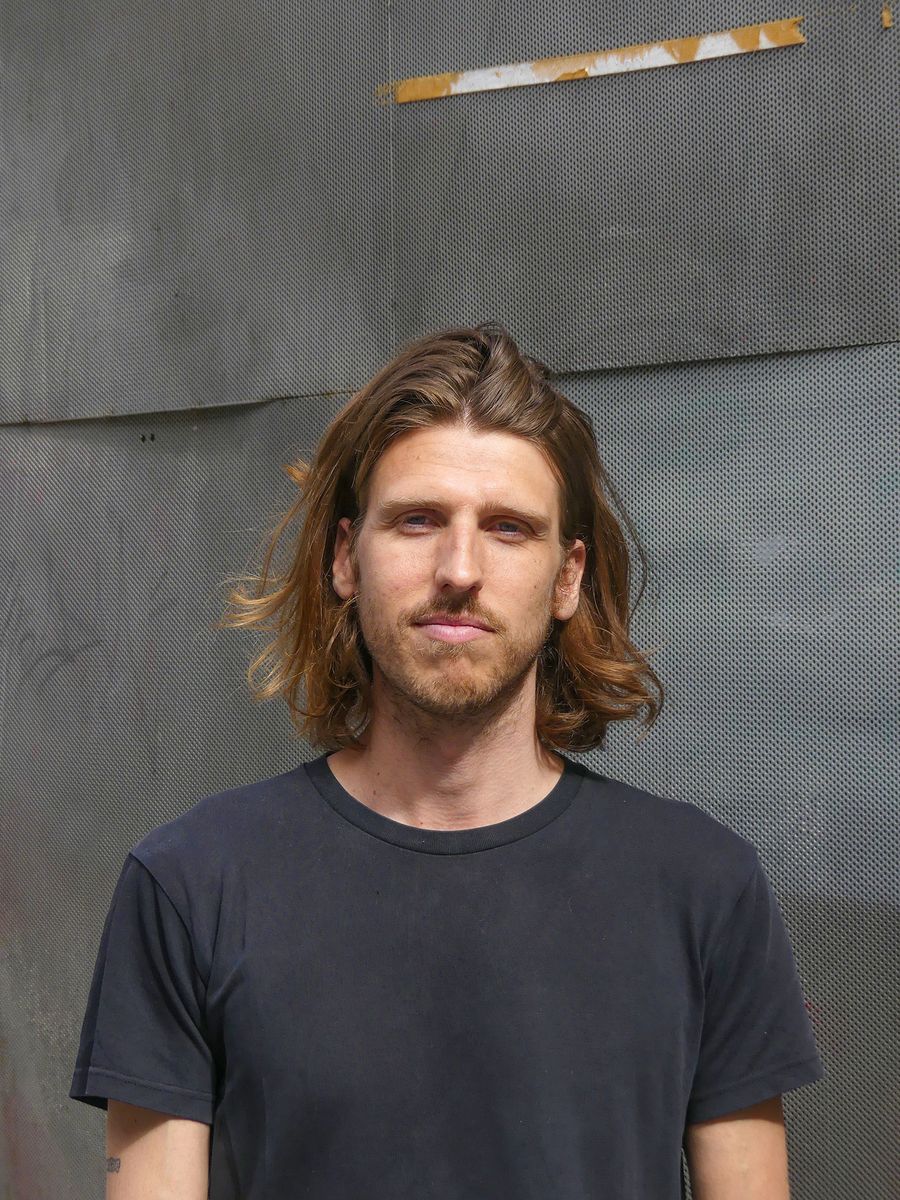
Portrait of Jean-Baptiste Durand.
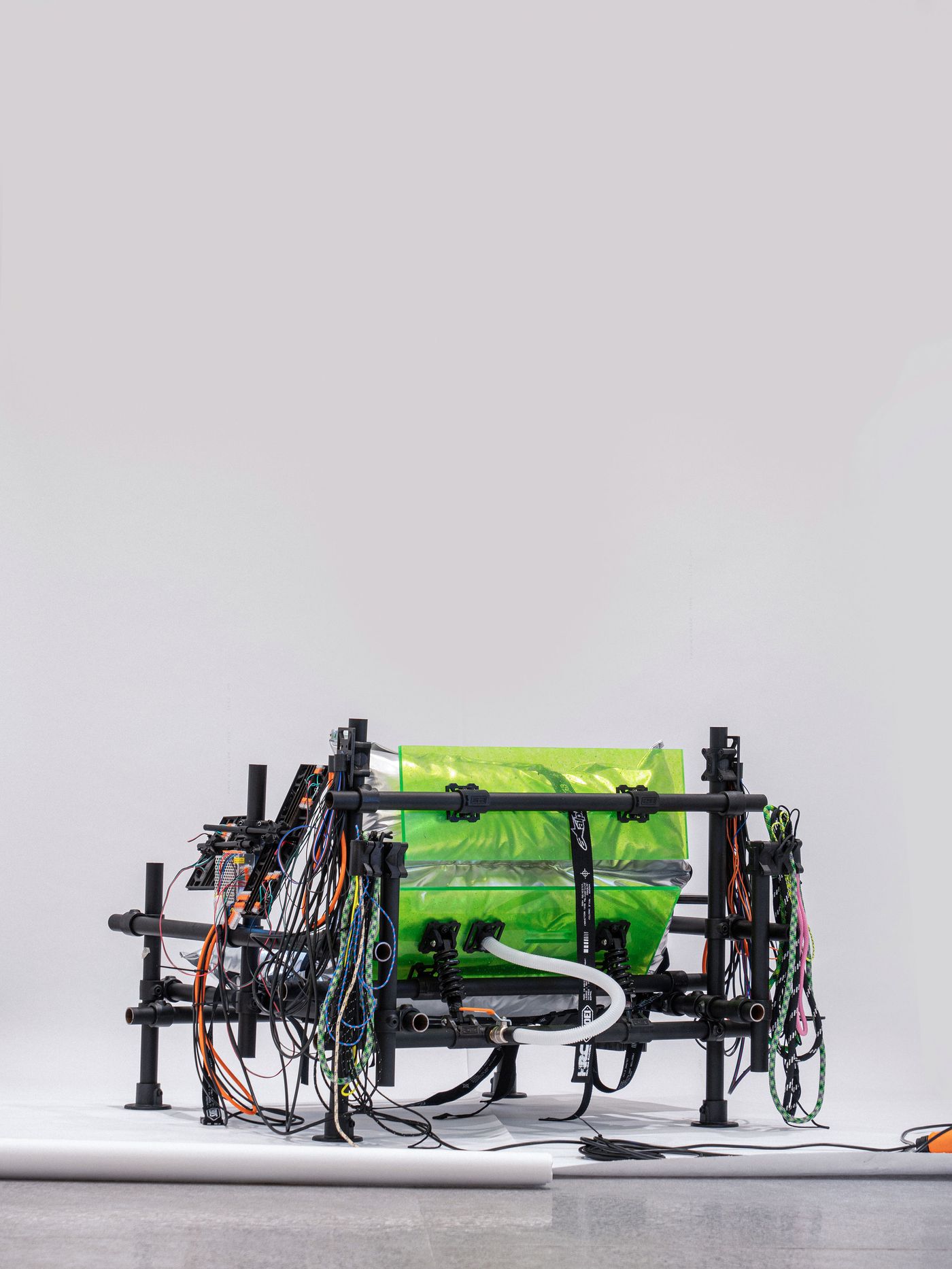
Hyperbeast Silver Armchair (2024). Edition of 8 + 4 EA. Each piece is unique. Materials: Steel, Polywood, PLA (3D Printed), LED, fabric, electrical components. 110x100x75cm.
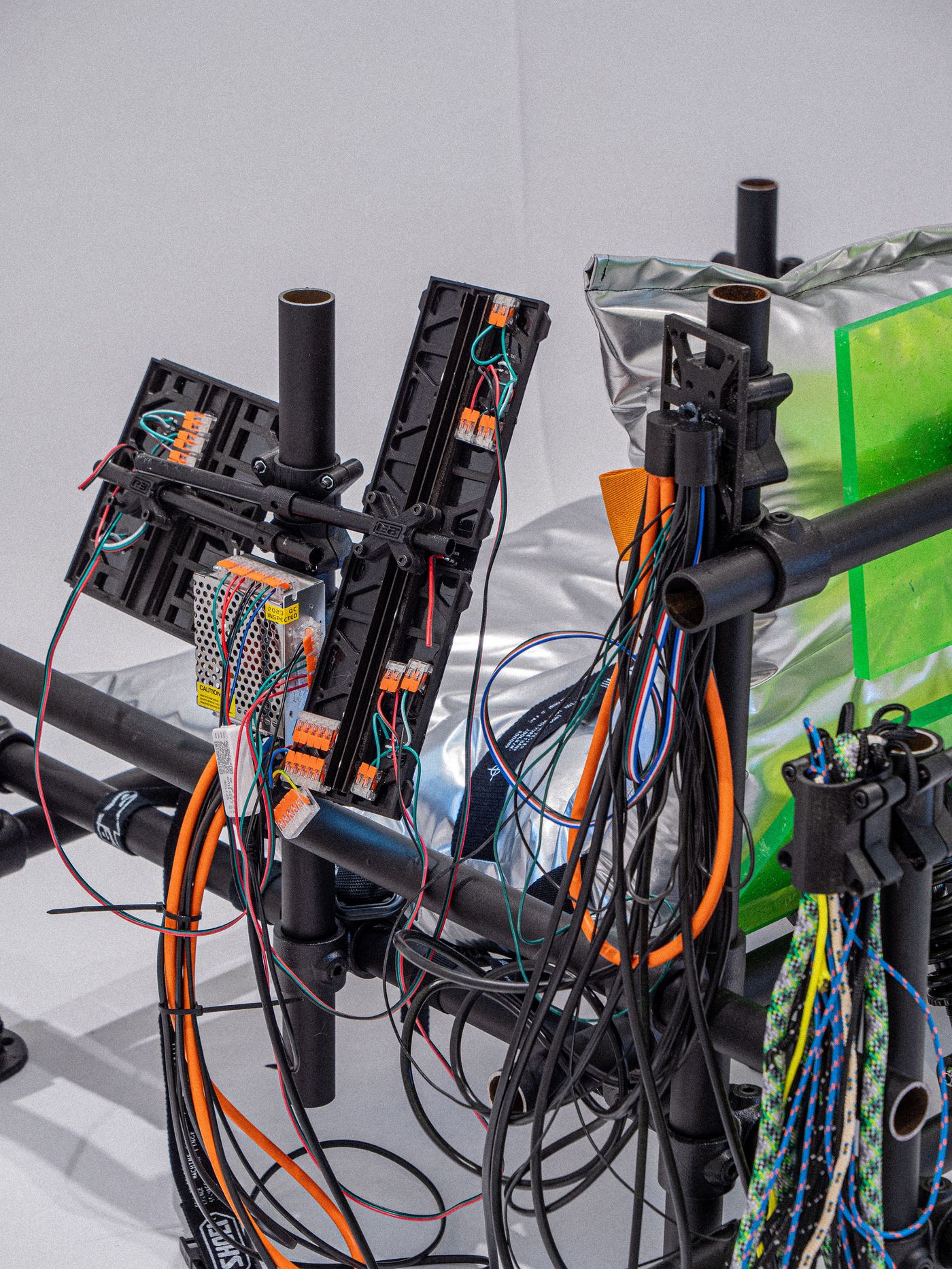
Hyperbeast Silver Armchair (2024). Edition of 8 + 4 EA. Each piece is unique. Materials: Steel, Polywood, PLA (3D Printed), LED, fabric, electrical components. 110x100x75cm.
Your work blends traditional crafts with industrial fabrication and digital processes. What drew you to this hybrid approach, and what do you hope to express through these chimeric artefacts?
I think it really started when I stepped away from “conventional” design and got into ceramics.
I was fed up with Paris at the time, craving a simpler, gentler life; so I moved to the seaside and opened a ceramics studio with my girlfriend. Since hardly anyone visited the studio—the locals weren’t exactly interested in my work—I felt a paradoxical sense of freedom. I could create whatever I wanted, without any pressure… since no one cared anyway, which was actually quite liberating. When we eventually closed the studio, I continued working with ceramics, until gradually hybridizing my pieces—adding accessories, lights, and so on.
Walk us through your creative process, from initial idea to finished piece. How much do you plan in advance, and how much is left to intuition or improvisation?
Everything is planned—though that’s becoming less and less true.
My process feels quite opportunistic: I’m always scanning for images, materials, and small details that catch my eye, building banks of references that I later draw from. Maybe it’s a bit like how a rap producer samples music—sometimes using a snippet as it is, sometimes transforming it completely. I work the same way: for example, a single image might spark an idea that I keep circling around.
Usually, I start with sketches in my notebooks, then move quickly into 3D modelling. When I first returned to making design pieces, I modelled every detail, down to the tiniest strap or cable. I’m now trying to give myself more freedom—to engage directly with materials earlier in the process, thereby allowing for more improvisation.
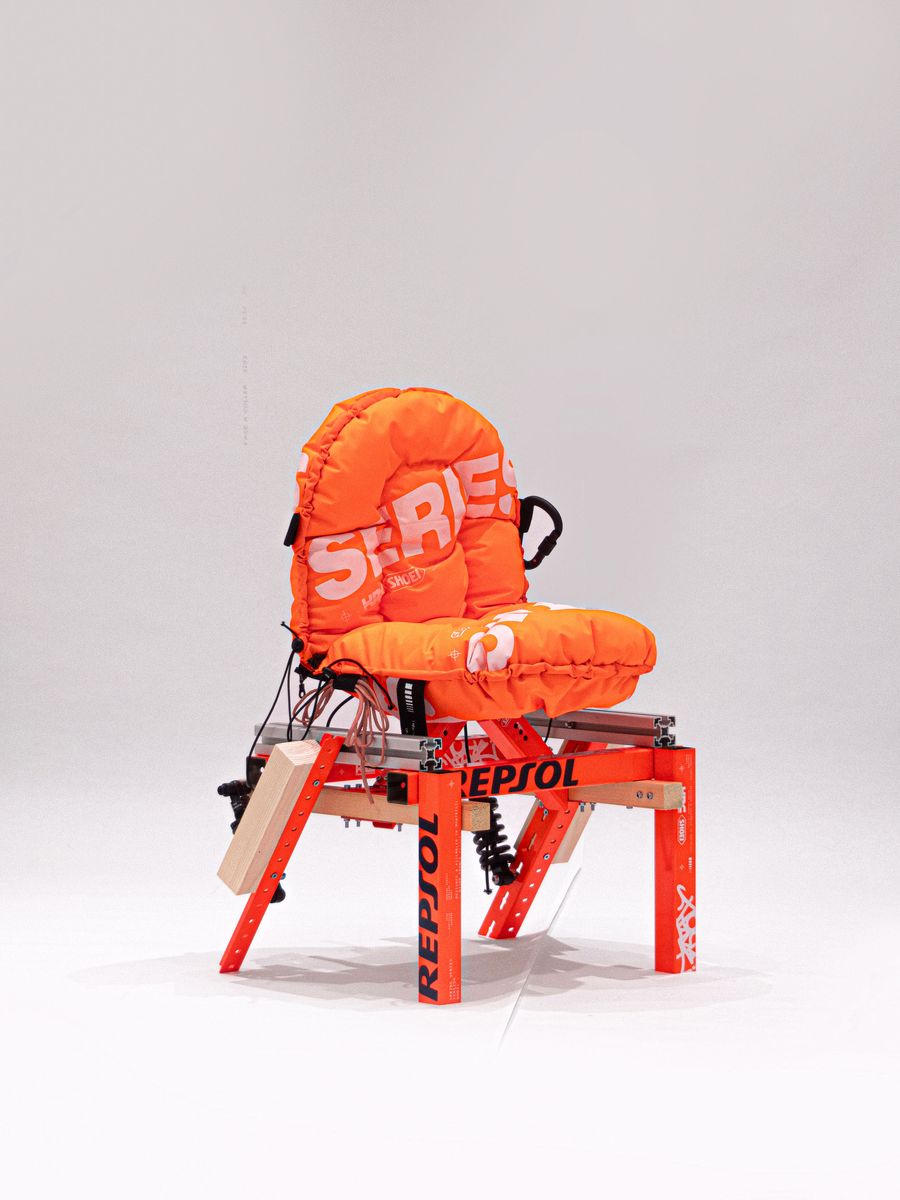
Spring Chair 01 Orange (2024). Edition of 8 + 4 EA. Materials: Steel, pine, aluminum, fabric. 63x45x75cm.
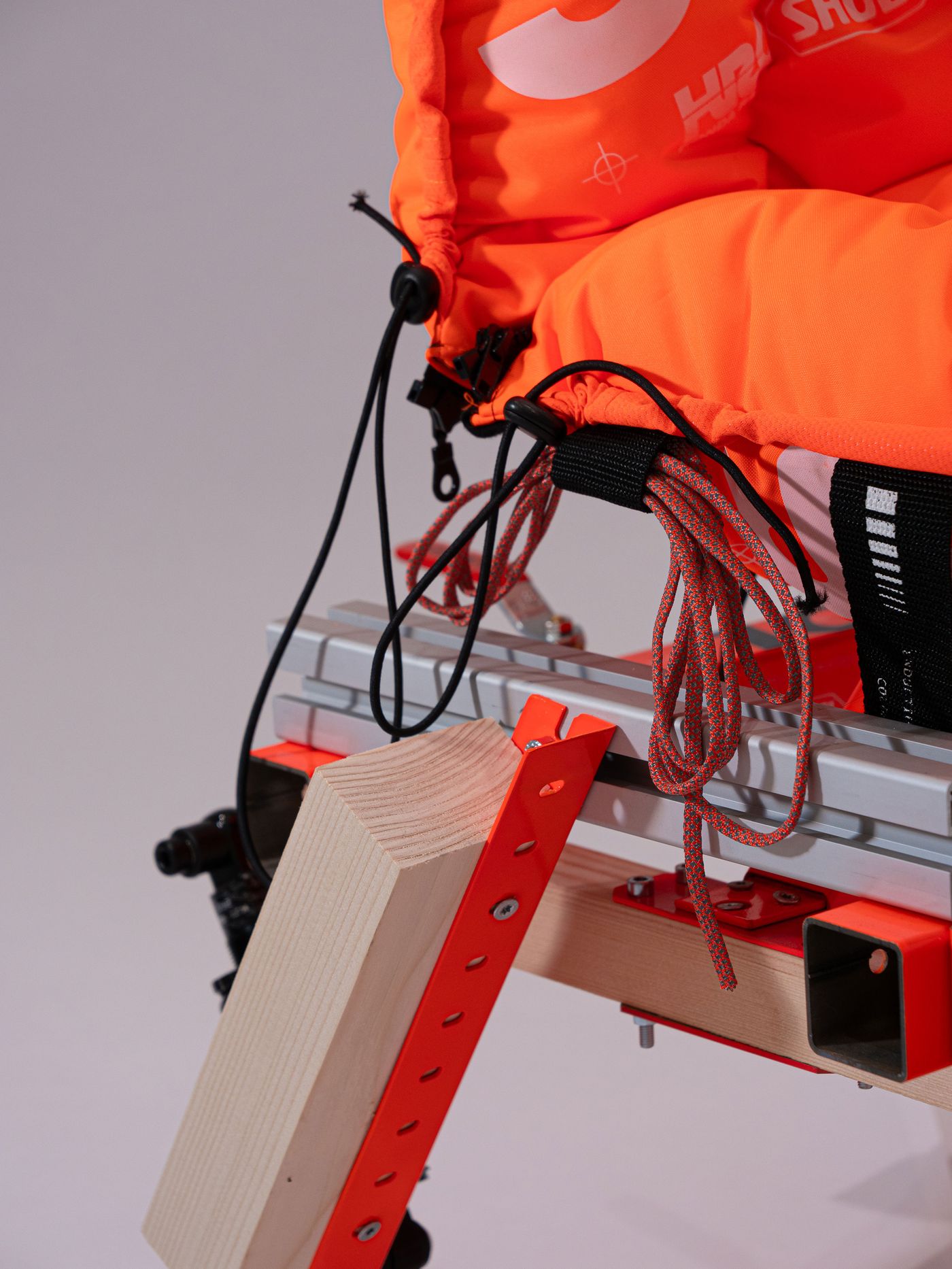
Spring Chair 01 Orange (2024). Edition of 8 + 4 EA. Materials: Steel, pine, aluminum, fabric. 63x45x75cm.
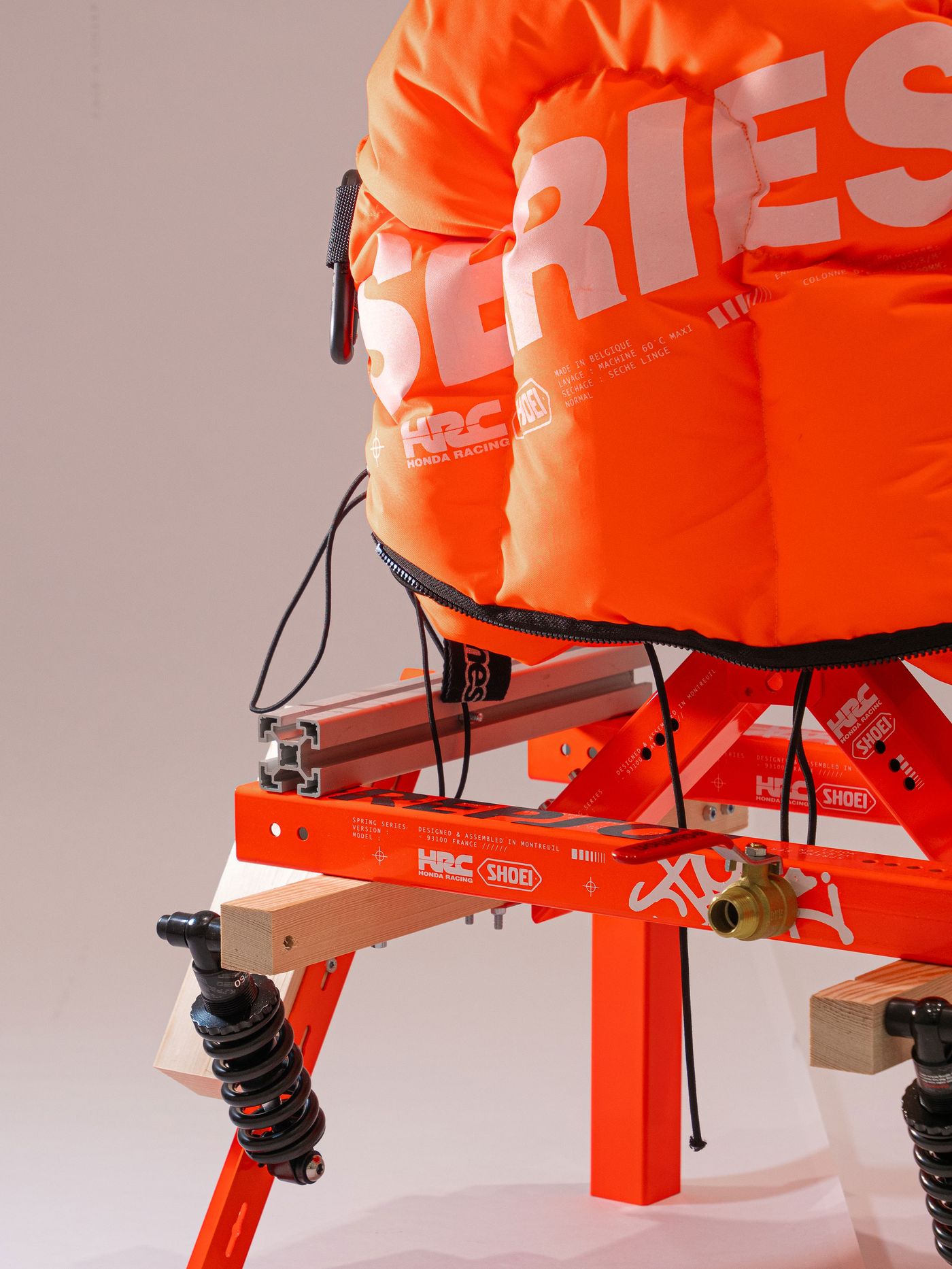
Spring Chair 01 Orange (2024). Edition of 8 + 4 EA. Materials: Steel, pine, aluminum, fabric. 63x45x75cm.
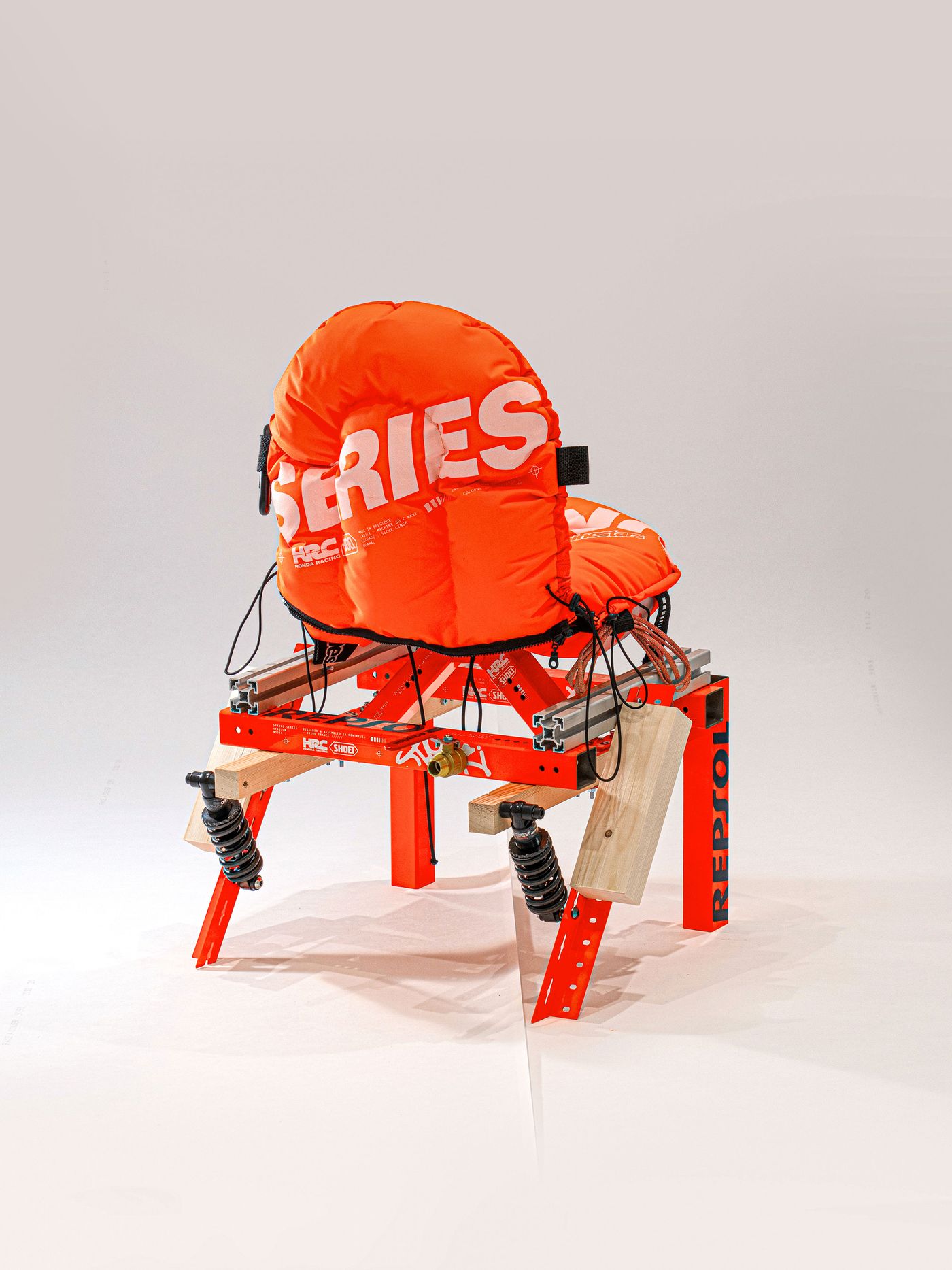
Spring Chair 01 Orange (2024). Edition of 8 + 4 EA. Materials: Steel, pine, aluminum, fabric. 63x45x75cm.
In pieces like Canidogz and Hyperbeast, there's a strong narrative thread running through the materials themselves. Do your objects begin with a story, or do the materials lead the way?
It’s funny because to me, those are actually the least narrative pieces! I have a series I call Dystopian Remains where I imagine artifacts unearthed by future archaeologists. Those pieces are tied to a simple story of a dystopian world. But otherwise, a lot of my work is just sparked by visuals. For example, Canidogz resulted from coming across technical dog clothing. I thought, “That would make a cool lamp!” I love it when people project their own narratives onto the objects, though. If it sparks curiosity or questioning, that’s already a win for me.
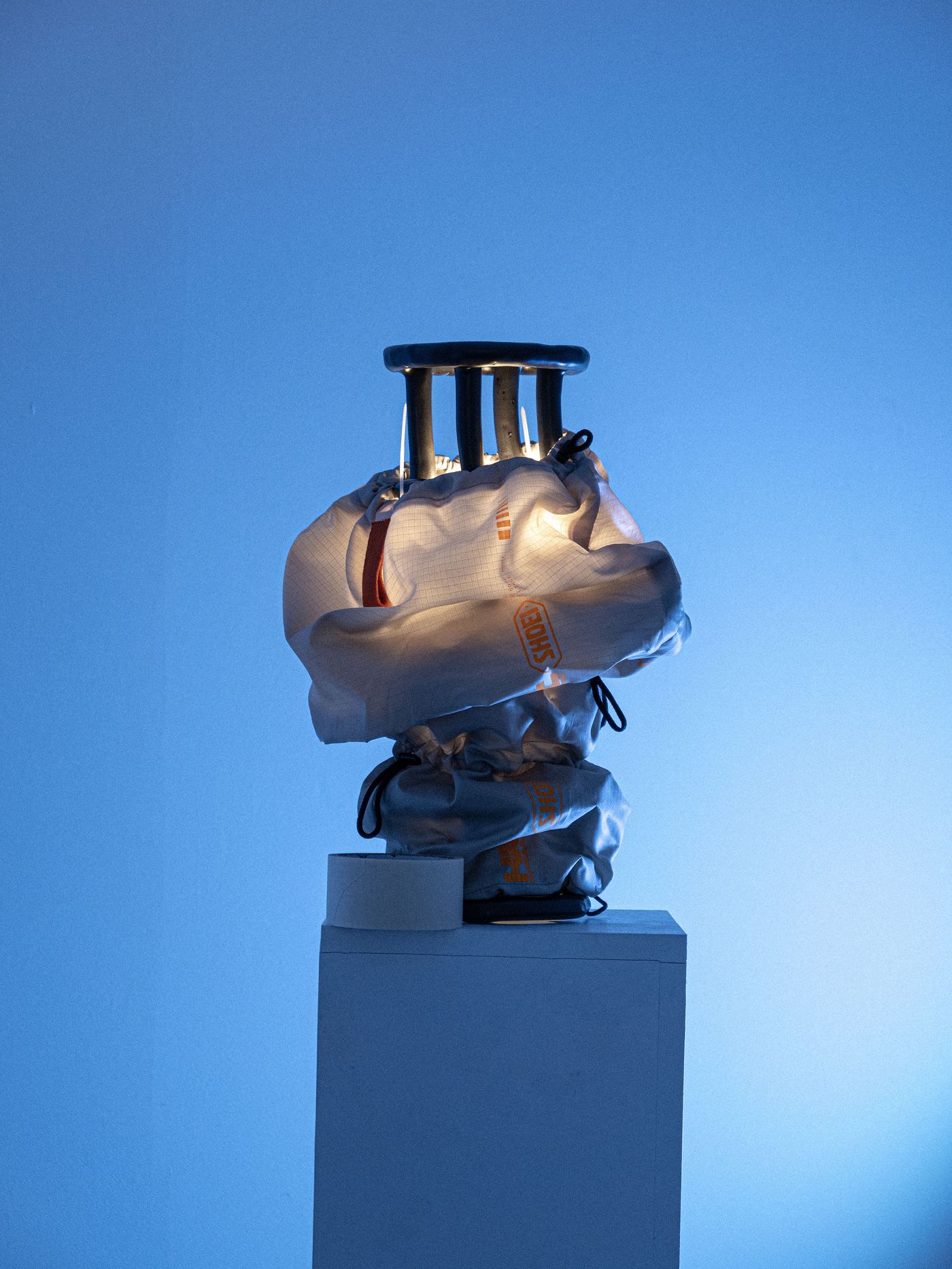
Canidogz 01 Grey Lamp (2024). Edition of 8 + 4EA + 1 Prototype. Materials: Fabric, steel, electrical components. 42x27x24cm.
You collaborate with your mother on the textile components of your work. What does this intergenerational exchange bring to your design language—emotionally, practically, or symbolically?
It’s an incredible gift. Working with my mother, I learned that she once dreamed of studying fashion—but had to give it up for financial reasons. As a kid, I used to sleep at my grandmother’s, where an unfinished painting by my mother hung on the wall. Maybe, unconsciously, I’ve carried the need to “finish the painting.”
Working together now feels deeply meaningful—and honestly, we just have a lot of fun.
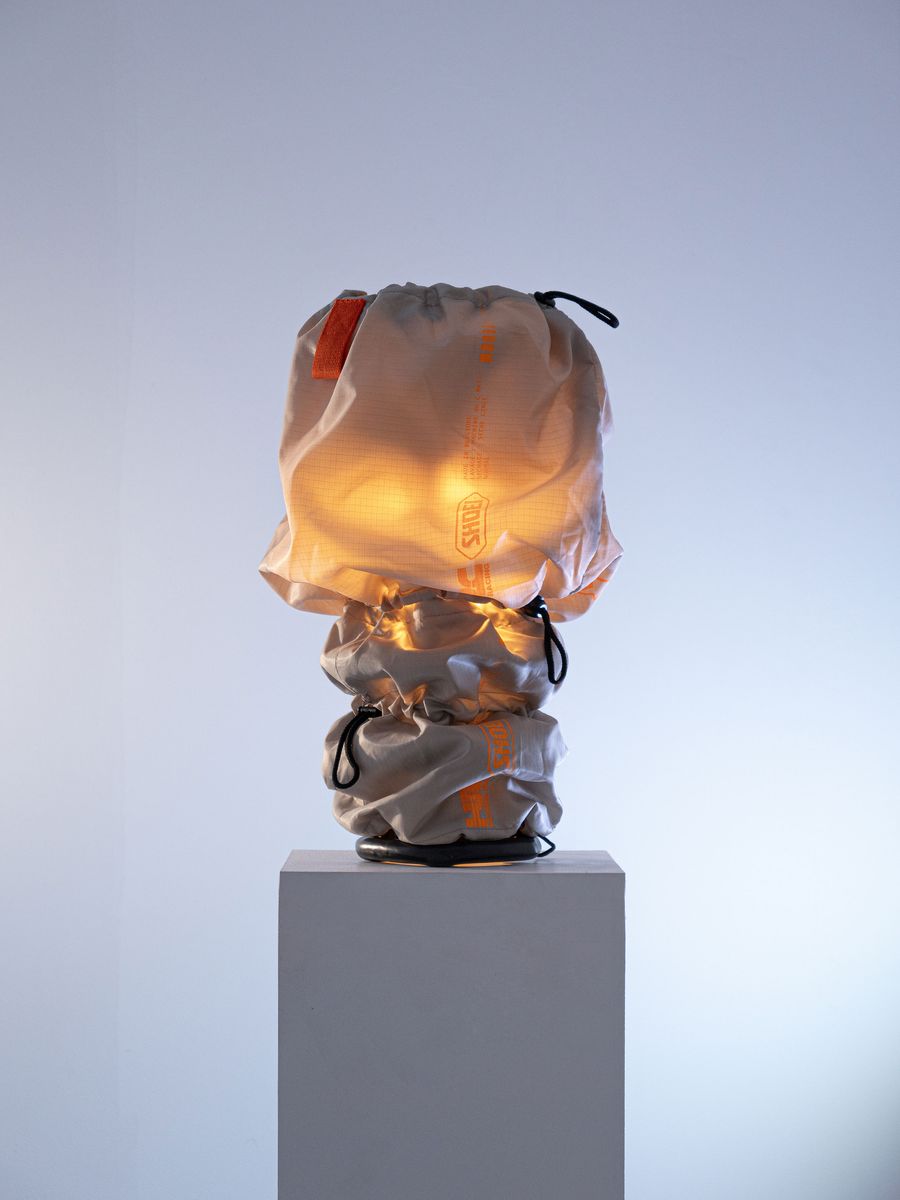
Canidogz 01 Grey Lamp (2024). Edition of 8 + 4EA + 1 Prototype. Materials: Fabric, steel, electrical components. 42x27x24cm.
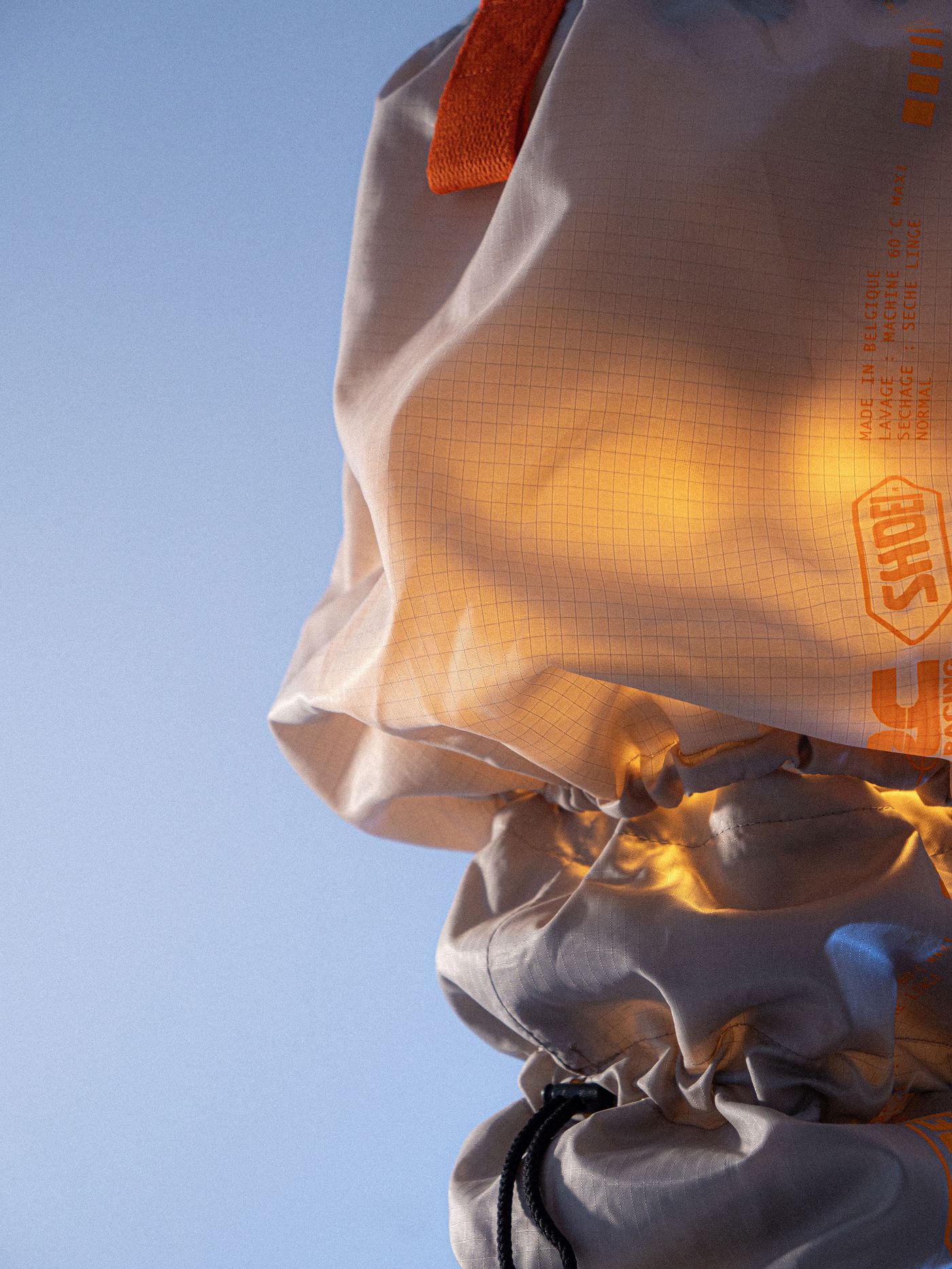
Canidogz 01 Grey Lamp (2024). Edition of 8 + 4EA + 1 Prototype. Materials: Fabric, steel, electrical components. 42x27x24cm.
Your pieces often seem to exist in a speculative future—equal parts sci-fi salvage and poetic metaphor. Can you tell us a few of the key ideas or narratives that have driven your recent work?
Science fiction is a big influence. I’m fascinated by dystopic, post-apocalyptic worlds. Maybe because they feel like where we’re inevitably heading towards. Intellectuals sound the alarm, but industrial and despotic powers feel unstoppable. My Dystopian Remains series for instance imagines a world where tech and fossil resources are exhausted, forcing people back to ancestral, low-tech craft.
Many of your pieces reflect the overstimulation and dystopic anxiety of the digital age. Do you see your work as a form of resistance—or perhaps adaptation—to the age of AI?
It’s not what drives me, but if the work raises questions, that’s fantastic. In a way, I like the idea of creating “dumb objects that ask smart questions.”
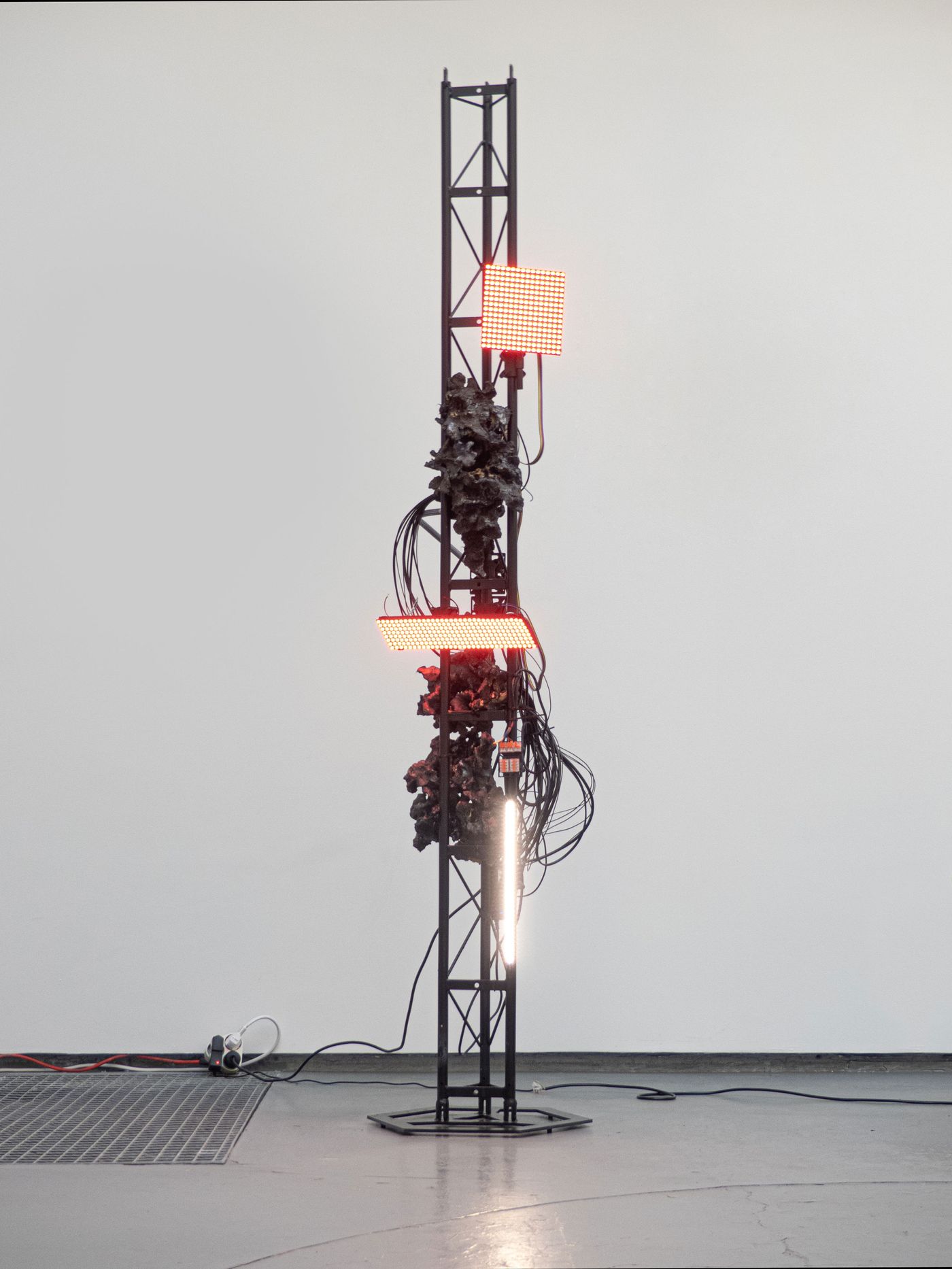
Voices in my Head (Floor) (2024). Silver aluminum light installation. Edition of 8 + 4 EA. Each piece is unique. Materials: Ceramic, aluminum, LEDs, electrical components. Variable dimensions. Photo by Grégory Copitet. Exhibition view, "Et pourquoi pas …", at Galerie Philippe Valentin, Paris, 2025. Photo by Grégory Copitet.

Voices in my Head (Floor) (2024). Silver aluminum light installation. Edition of 8 + 4 EA. Each piece is unique. Materials: Ceramic, aluminum, LEDs, electrical components. Variable dimensions. Photo by Grégory Copitet.
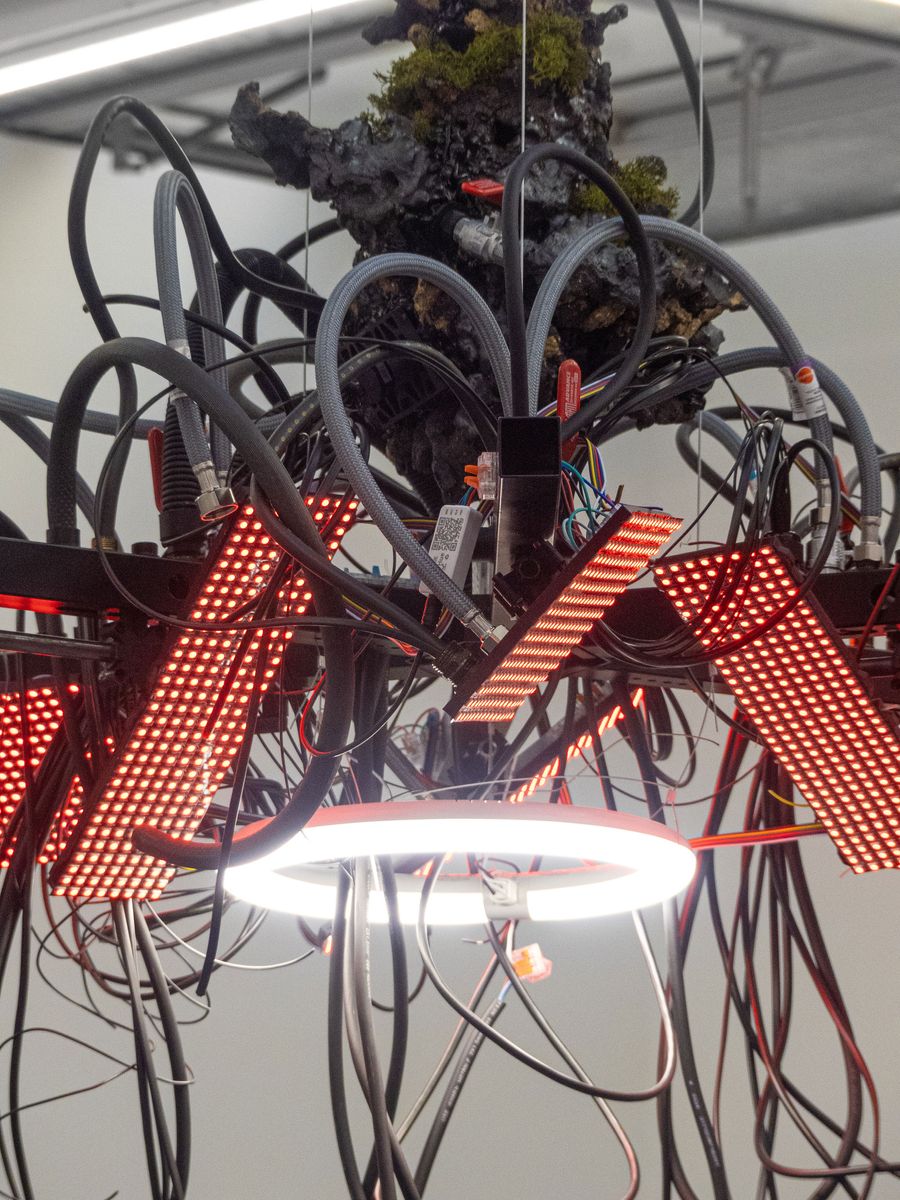
Voices in my Head (Hung) (2025). Edition of 8 + 4 EA. Each piece is unique. Materials: Steel, stoneware, PLA-based foam, PLA (3d printed), LEDs, pipes, electrical components. Variable dimensions. Photo by Grégory Copitet.
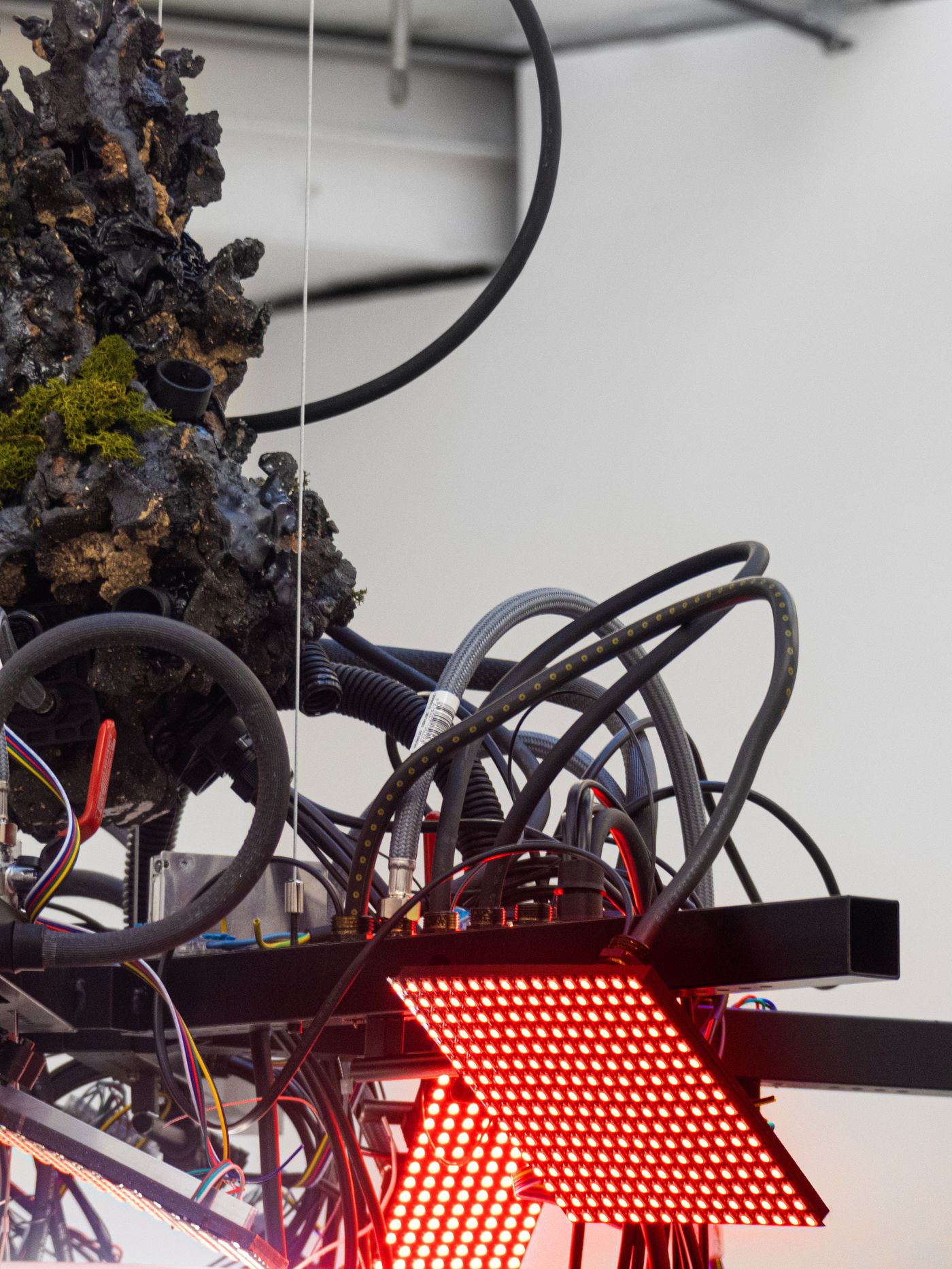
Voices in my Head (Hung) (2025). Edition of 8 + 4 EA. Each piece is unique. Materials: Steel, stoneware, PLA-based foam, PLA (3d printed), LEDs, pipes, electrical components. Variable dimensions. Photo by Grégory Copitet.
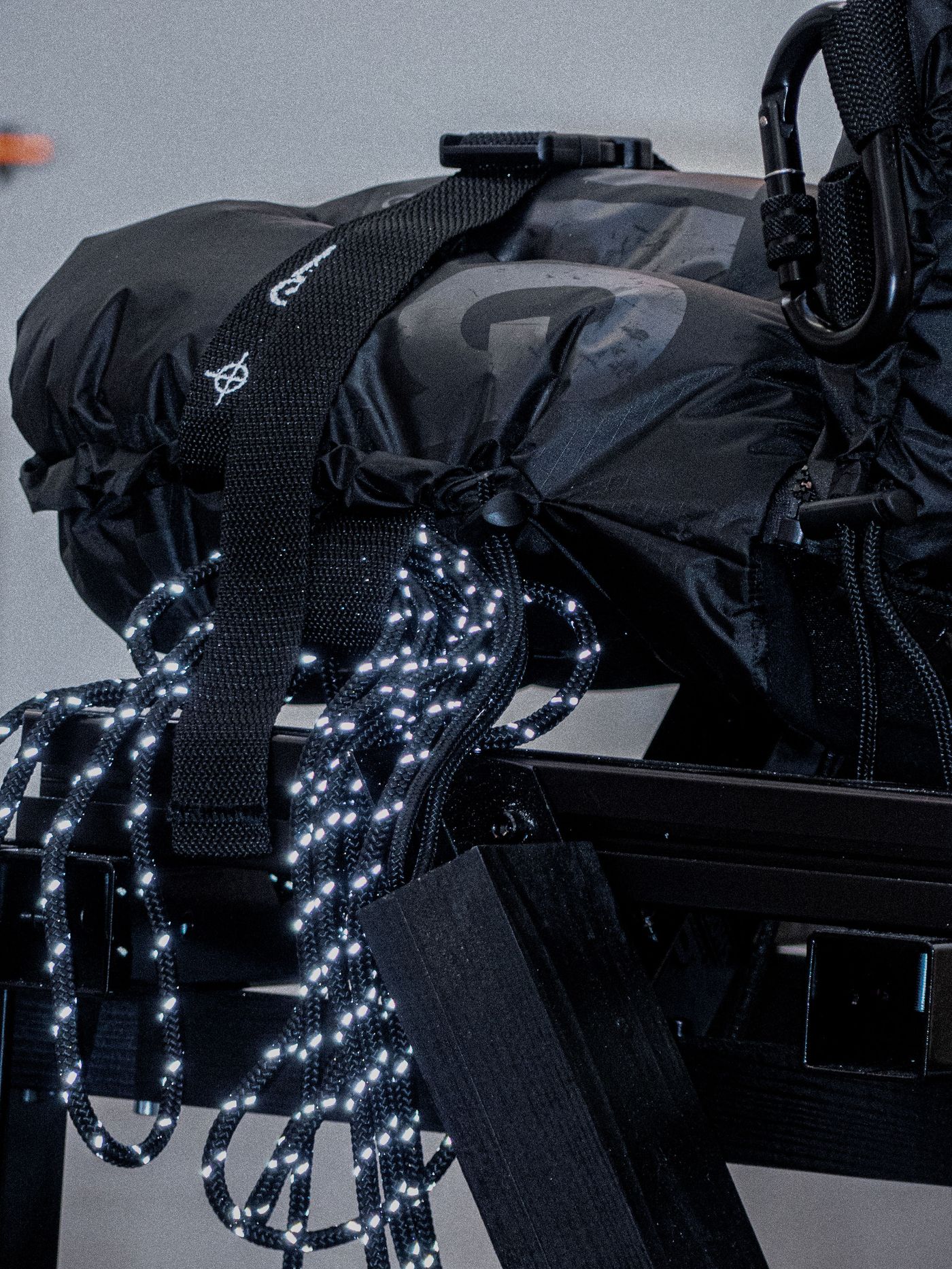
Spring Chair 01 Black (2025). Edition of 8 + 4 EA. Materials: Steel, pine, aluminium, fabric. 63x45x75cm.
Where do you source the technical materials that shape your aesthetic vocabulary? How central are both upcycling and reuse to your practice, ideologically or practically?
Honestly, for now, I buy almost everything. I’d love to work with offcuts or waste materials, but I need to plan ahead based on an idea, not found materials. Plus, my workshop’s too small to stockpile anything!
Maybe my work still reflects something about consumer culture—fake sustainability, greenwashing… Ideas I find interesting, even if they're not the starting point. Ideologically, I believe in social and environmental progress. I hope future projects will move more consciously in that direction.
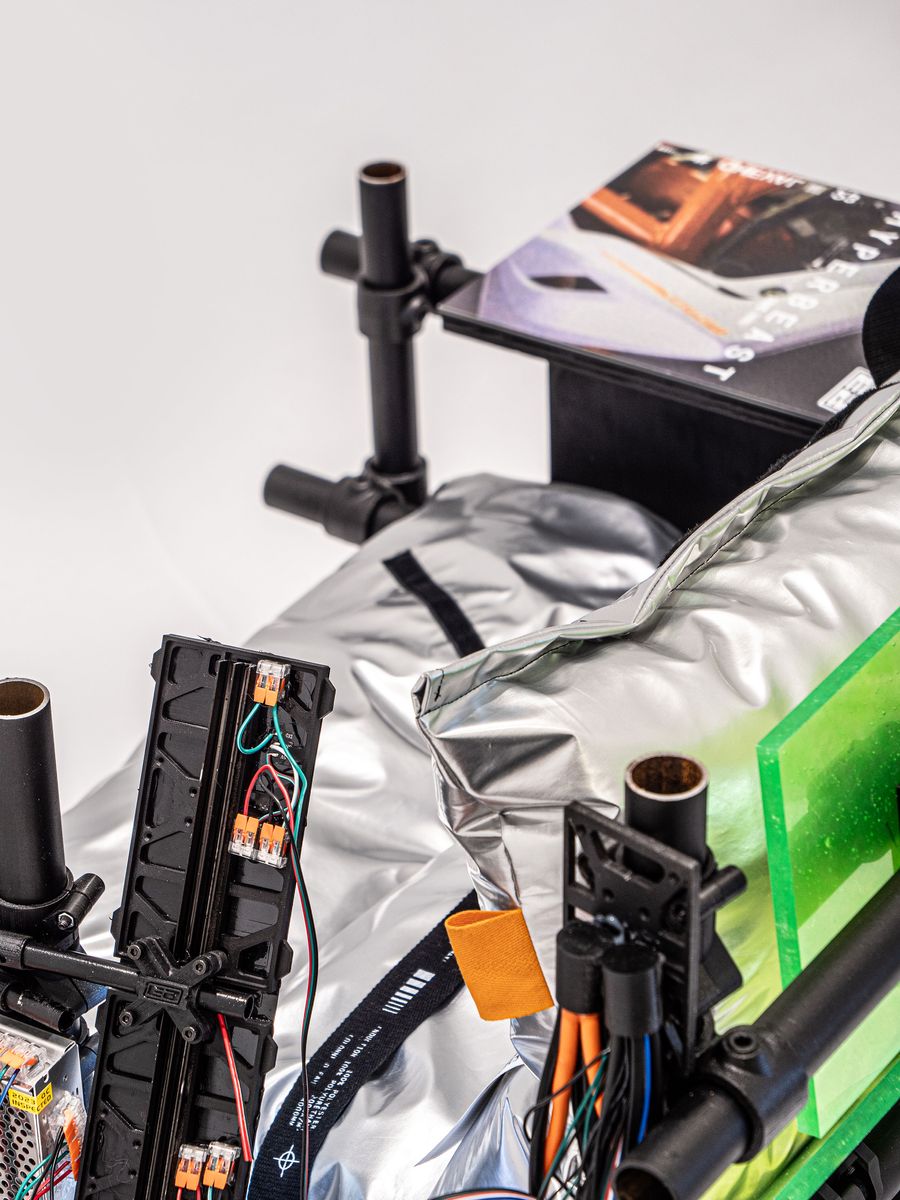
Hyperbeast Silver Armchair (2024). Edition of 8 + 4 EA. Each piece is unique. Materials: Steel, Polywood, PLA (3D Printed), LED, fabric, electrical components. 110x100x75cm.

Hyperbeast Silver Armchair (2024). Edition of 8 + 4 EA. Each piece is unique. Materials: Steel, Polywood, PLA (3D Printed), LED, fabric, electrical components. 110x100x75cm.
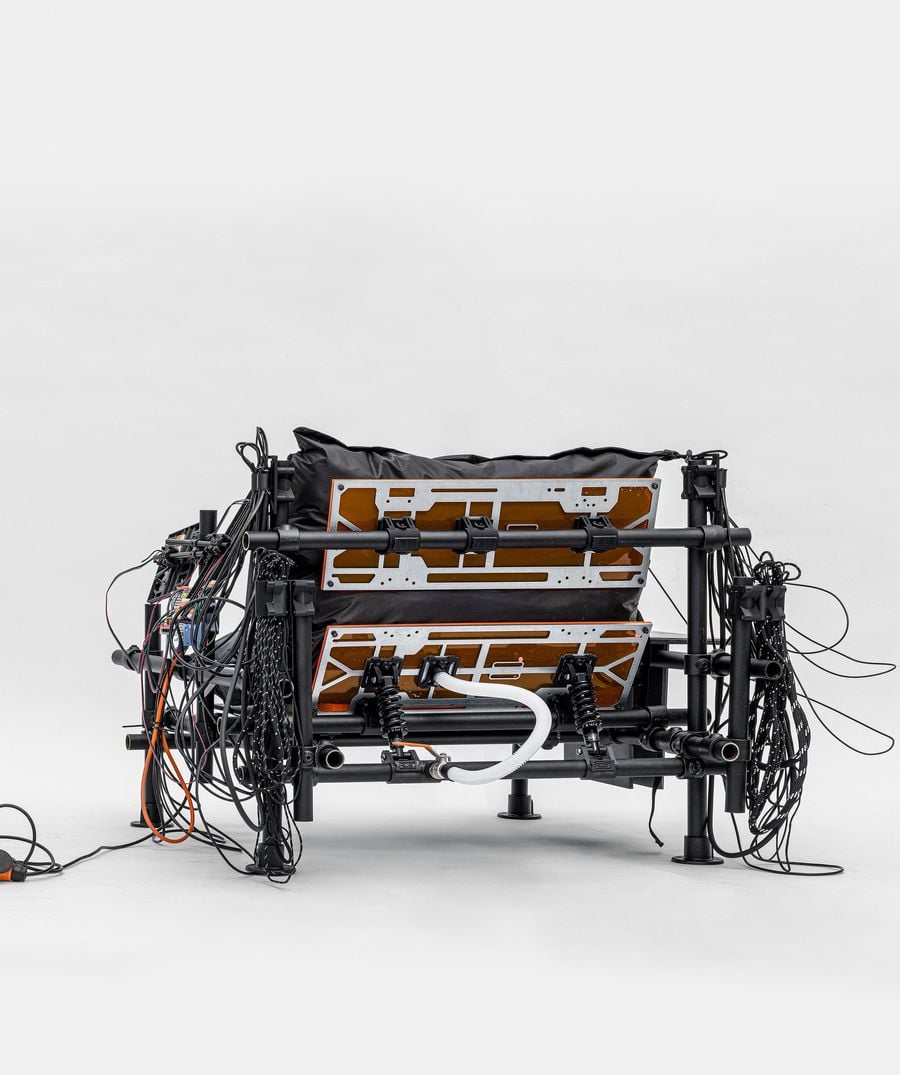
Hyperbeast Black Armchair (2024). Edition of 8 + 4 EA. Each piece is unique. Materials: Steel, PMMA, PLA (3D Printed), LED, fabric, electrical components. 110x100x75cm. Photography by Gregory Copitet.
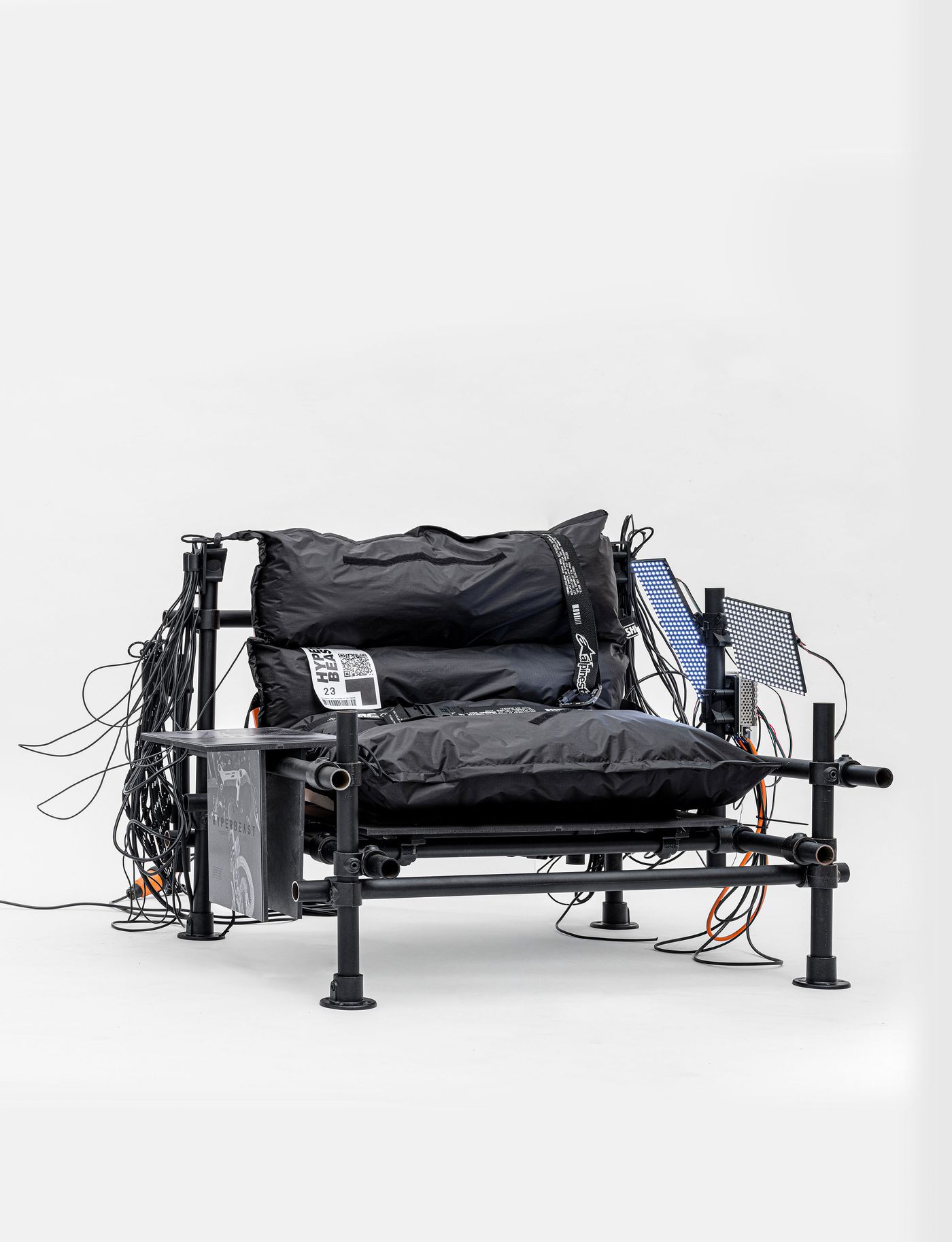
Hyperbeast Black Armchair (2024). Edition of 8 + 4 EA. Each piece is unique. Materials: Steel, PMMA, PLA (3D Printed), LED, fabric, electrical components. 110x100x75cm. Photography by Gregory Copitet.
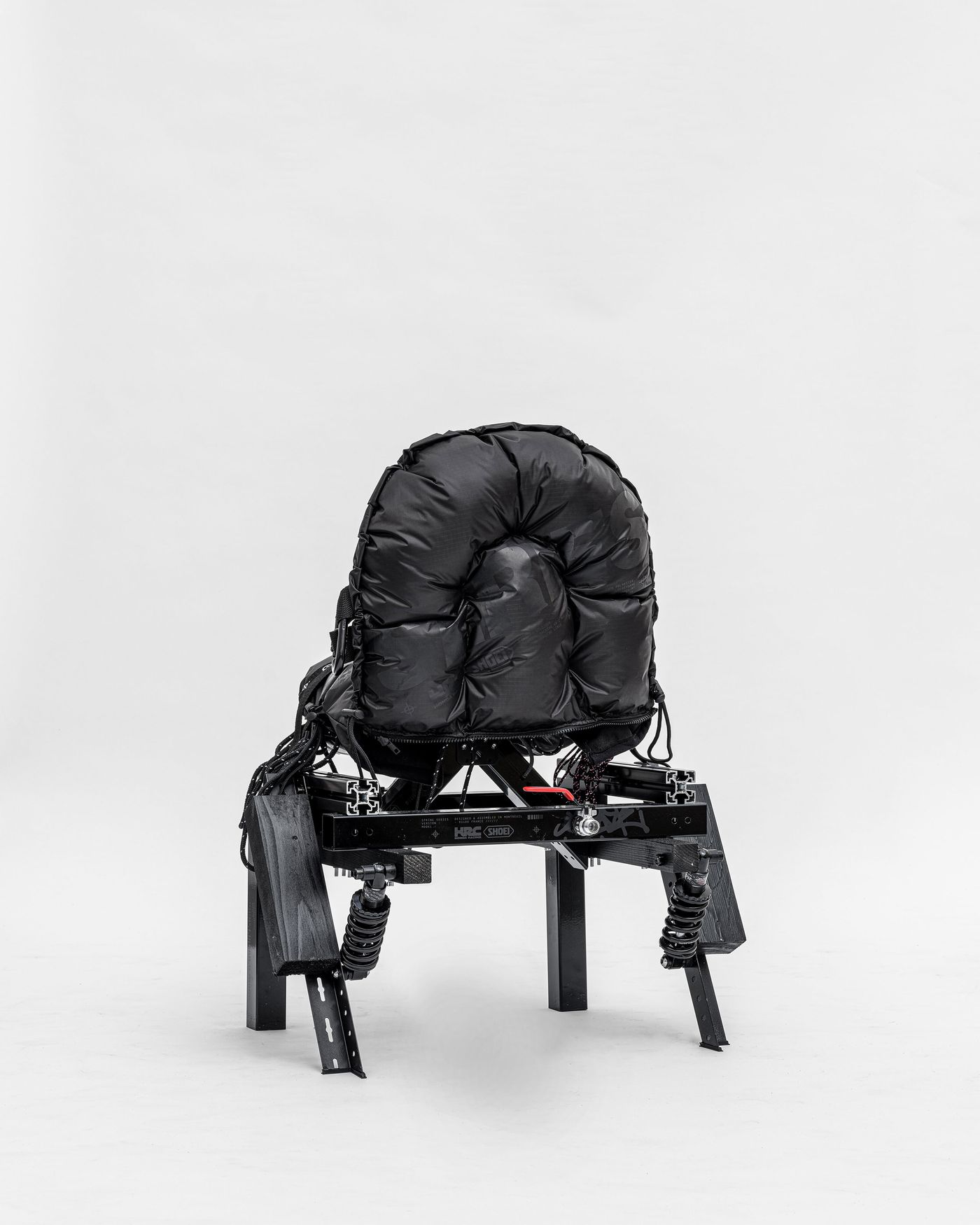
Spring Chair 01 Black (2025). Edition of 8 + 4 EA. Materials: Steel, pine, aluminium, fabric. 63x45x75cm. Photography by Gregory Copitet.
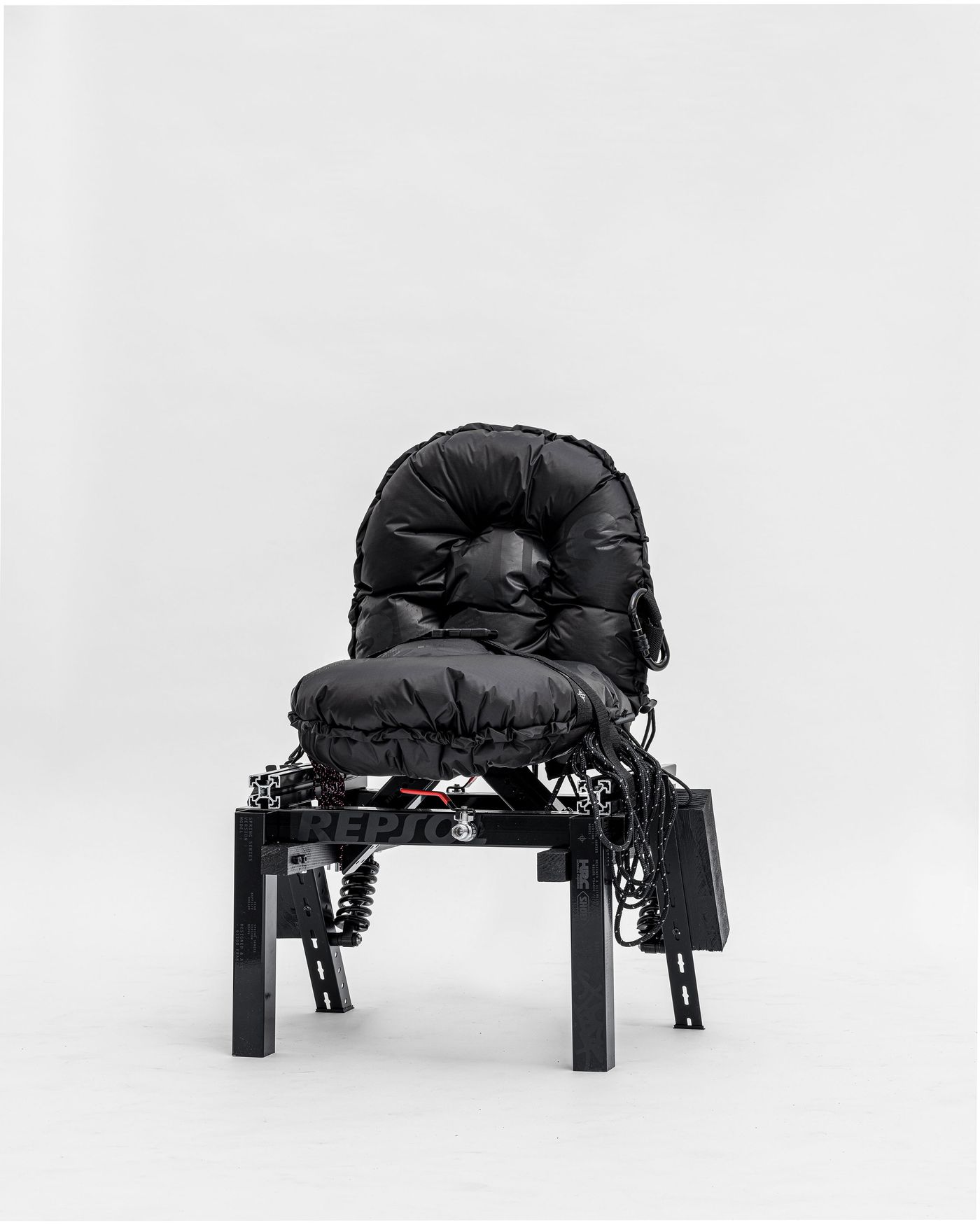
Spring Chair 01 Black (2025). Edition of 8 + 4 EA. Materials: Steel, pine, aluminium, fabric. 63x45x75cm. Photography by Gregory Copitet.
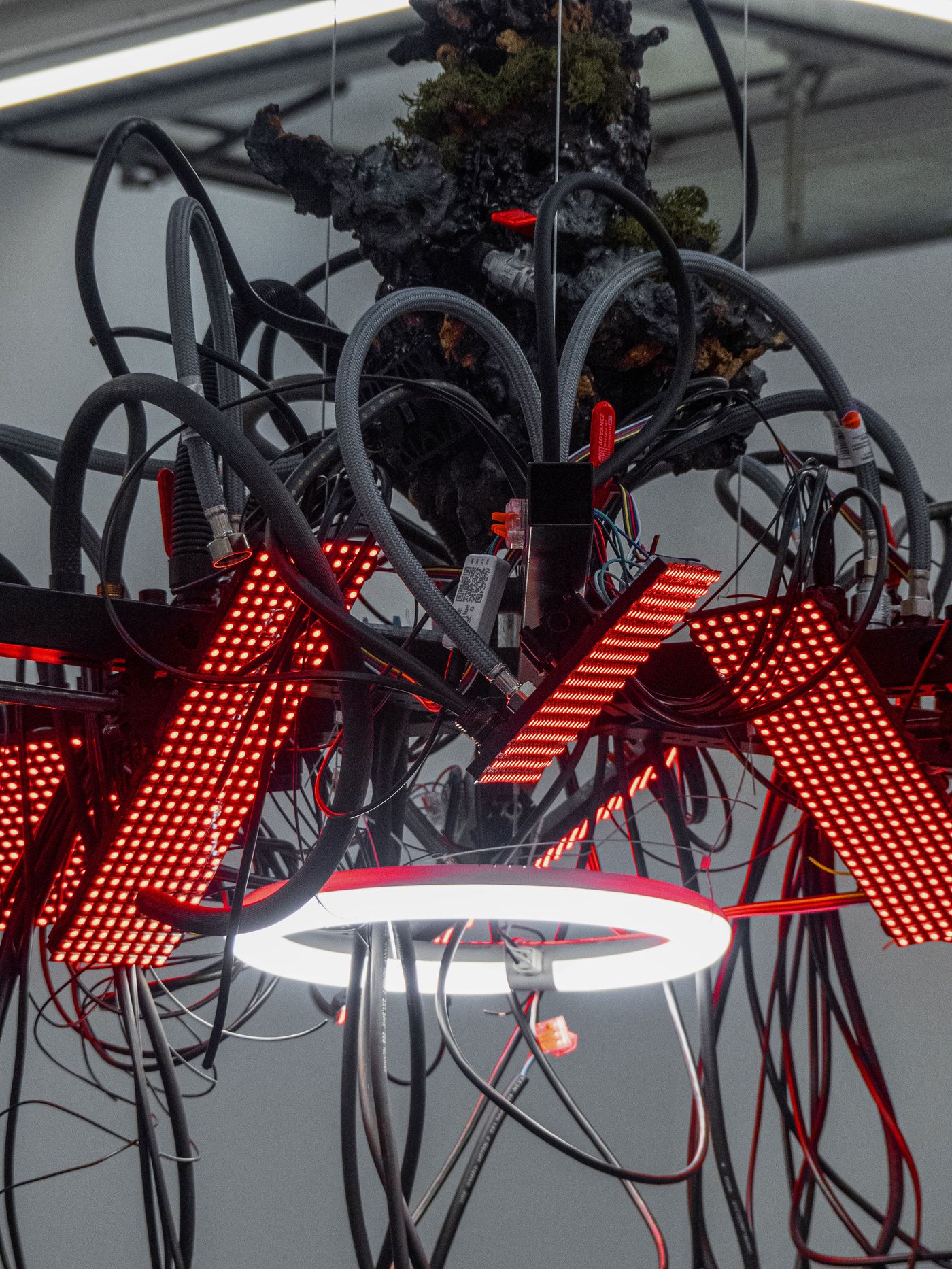
Voices in my Head (Hung) (2025). Edition of 8 + 4 EA. Each piece is unique. Materials: Steel, stoneware, PLA-based foam, PLA (3d printed), LEDs, pipes, electrical components. Variable dimensions. Photo by Grégory Copitet.
There’s a playful absurdity in your work—fluorescent straps, pseudo-functional parts, unexpected hybrids. What role does humour play in your practice?
Humour is super important! I don’t set out to make “funny” pieces, but if people see humour in them, I love it. When people project their own meanings onto the objects, that means that the work isn’t neutral—it’s alive.
Your aesthetic is distinctive, but never static. Who or what are your enduring sources of inspiration across art, design, or elsewhere?
Inspiration can come from anywhere: science, art, technology. I see my work as aesthetic research, so I'm always on the lookout for anything visual that sparks my interest.
If one of your objects were to be unearthed in 200 years, what do you hope it might say about our time—or about you as its maker?
If people just thought, “He was a nice guy,” that would be enough. The rest… I’ll leave that up to you.
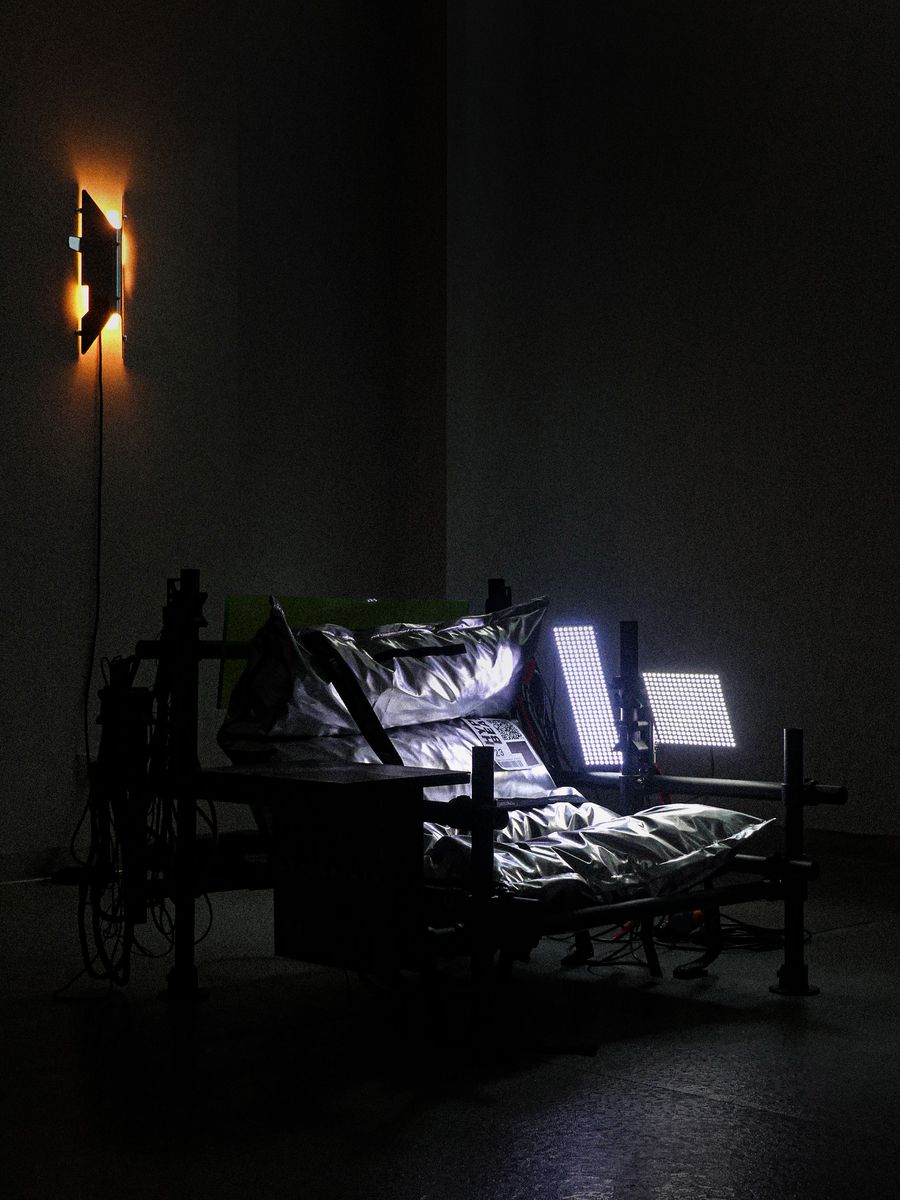
Hyperbeast Silver Armchair (2024). Edition of 8 + 4 EA. Each piece is unique. Materials: Steel, Polywood, PLA (3D Printed), LED, fabric, electrical components. 110x100x75cm.
